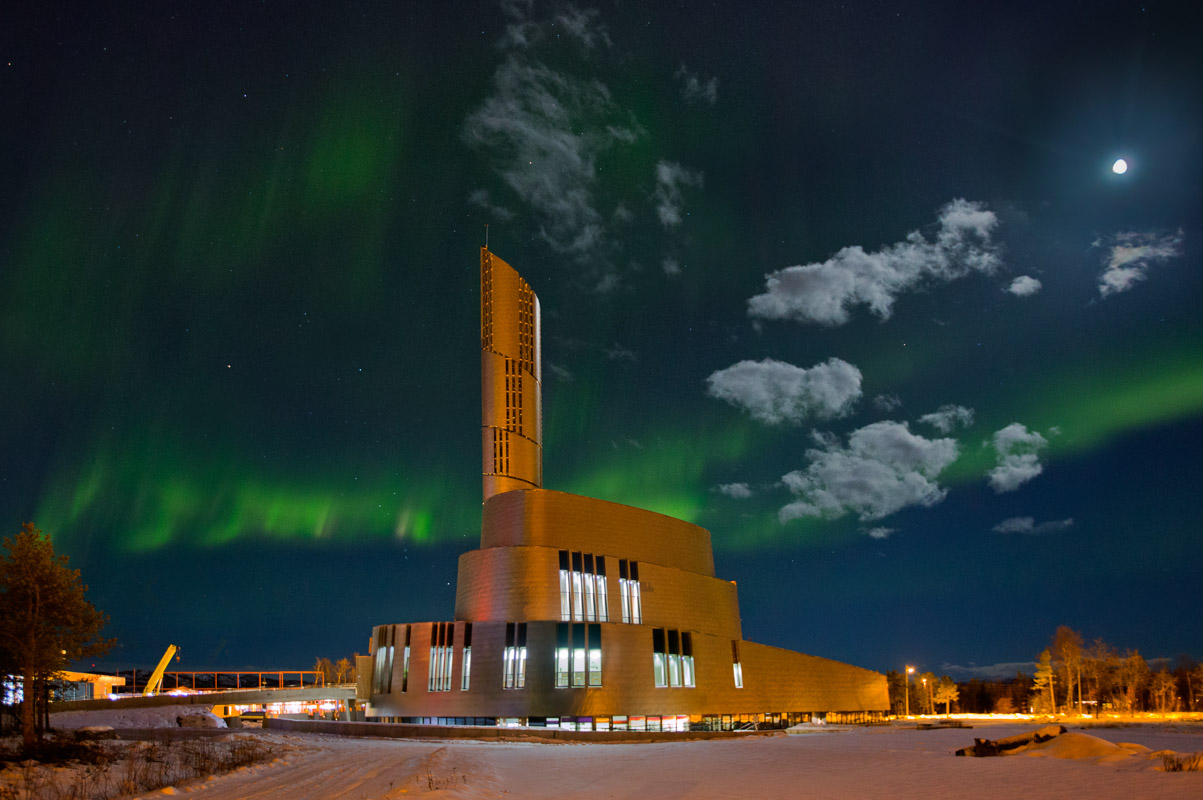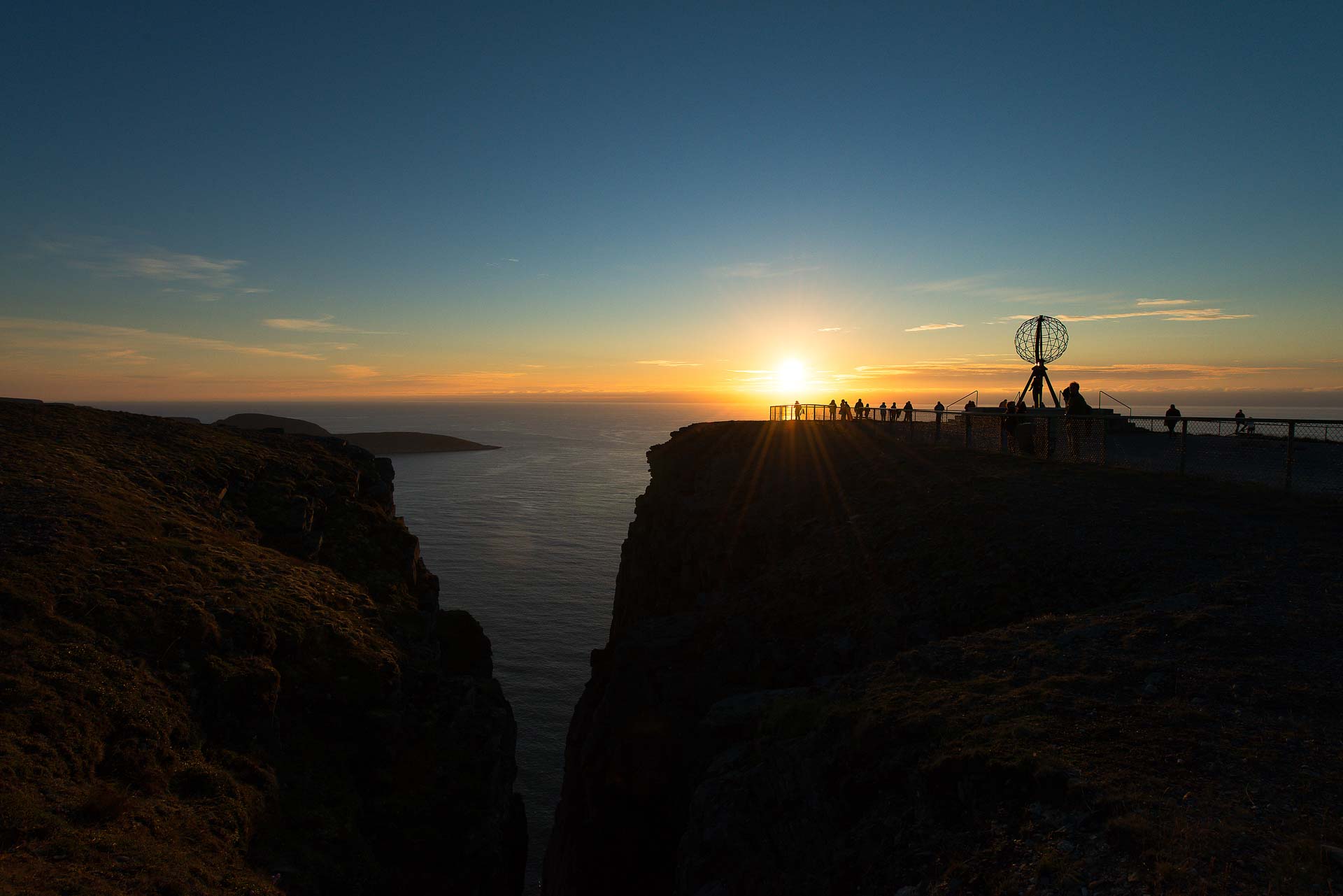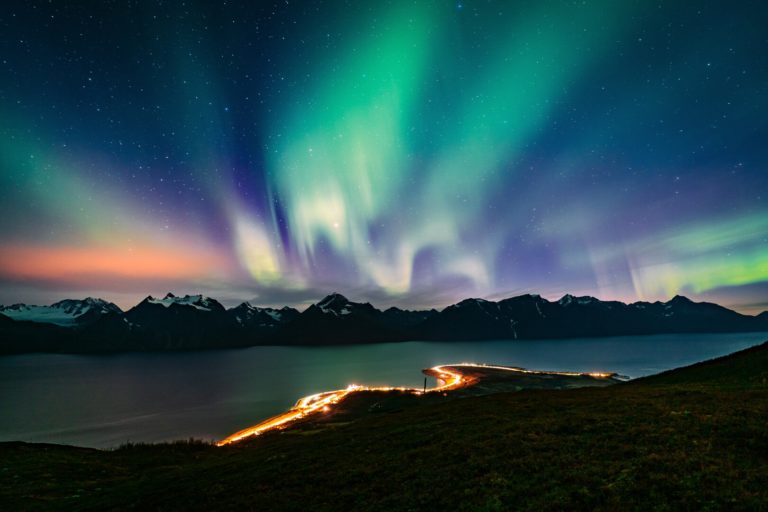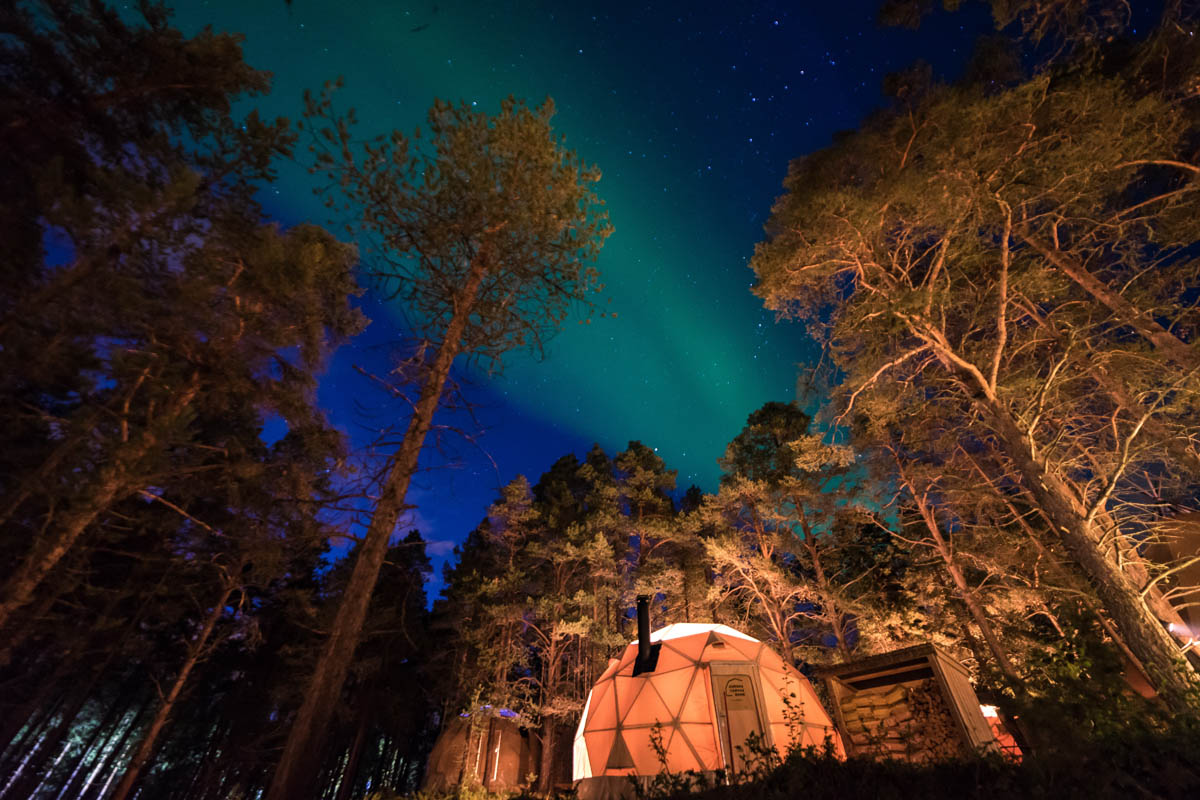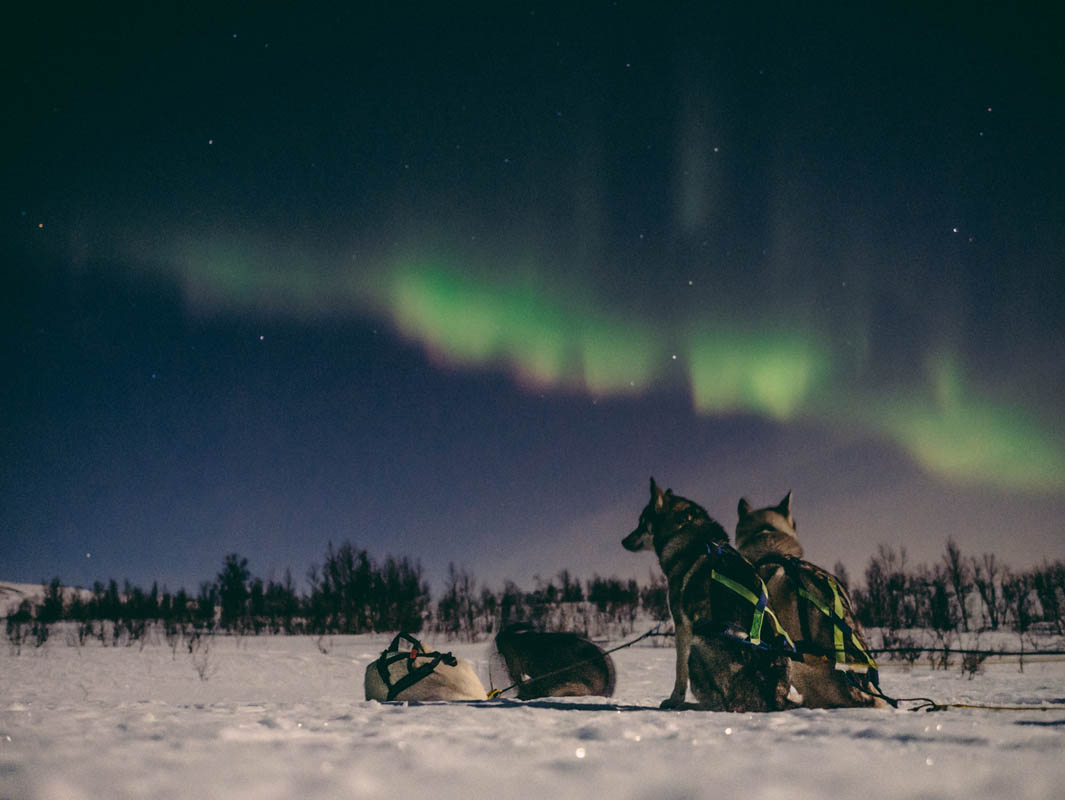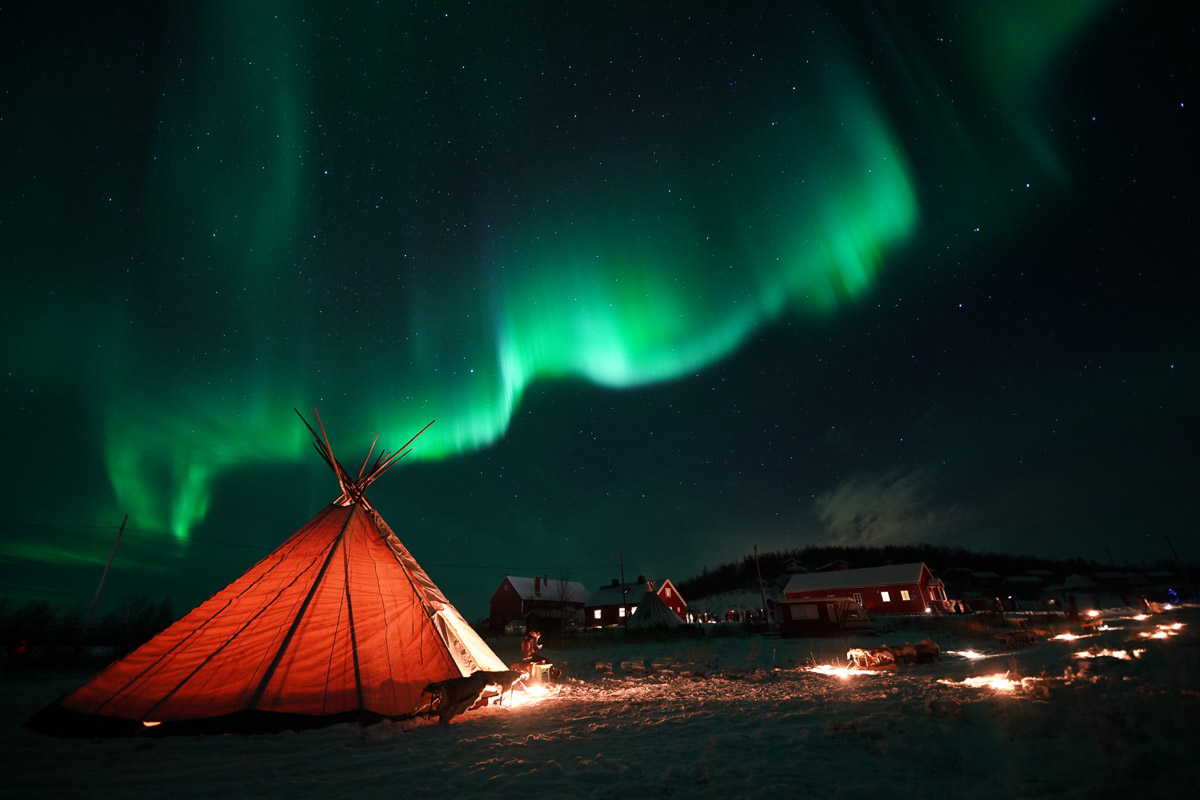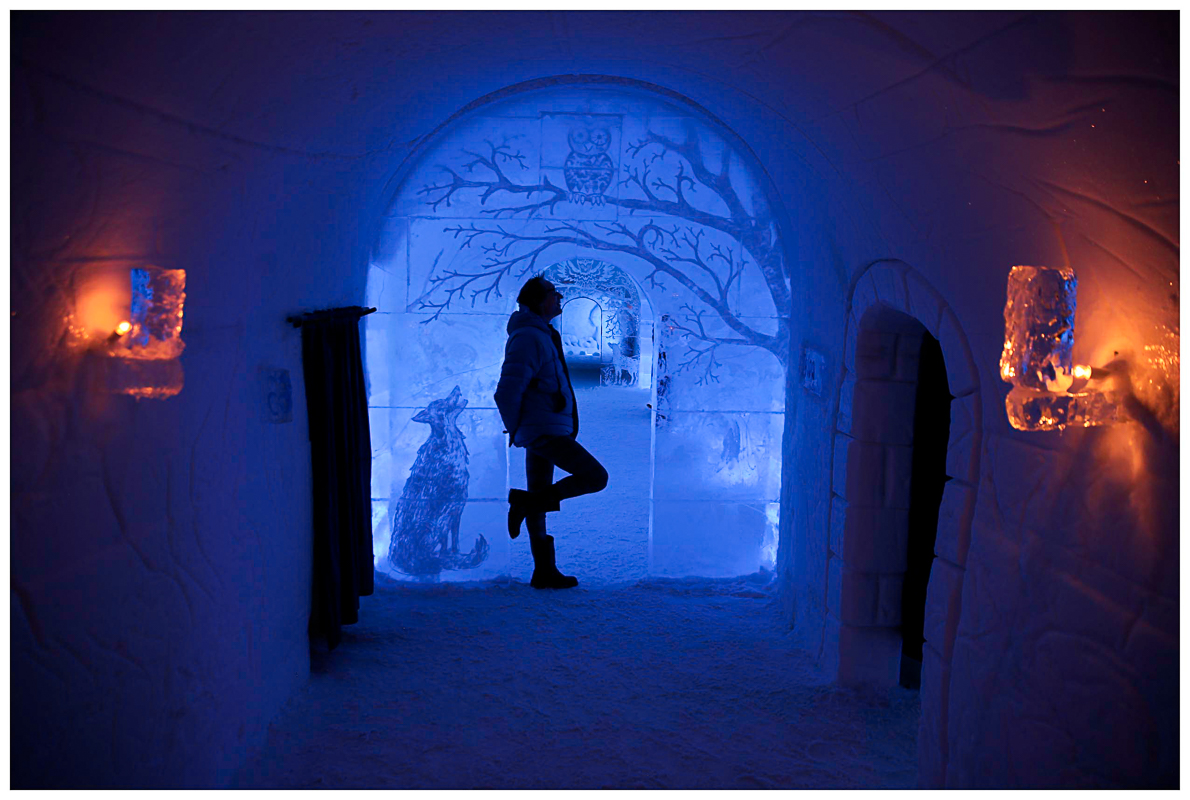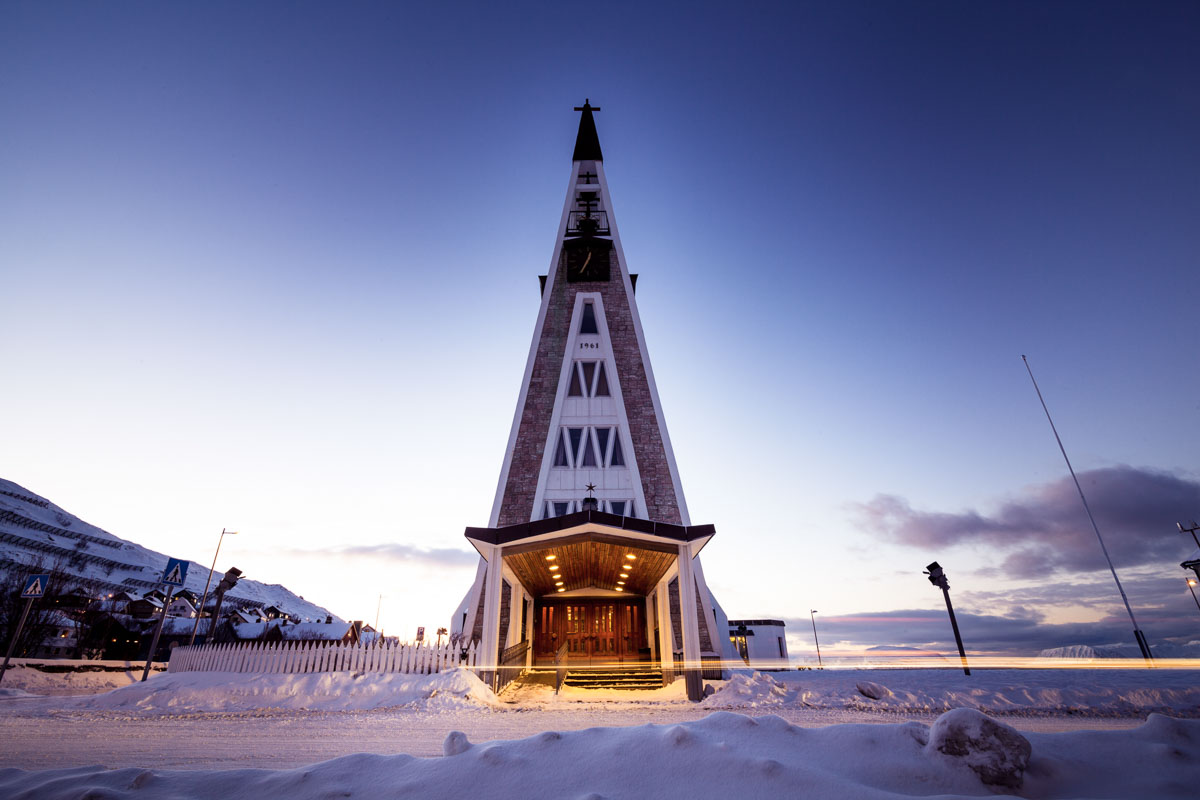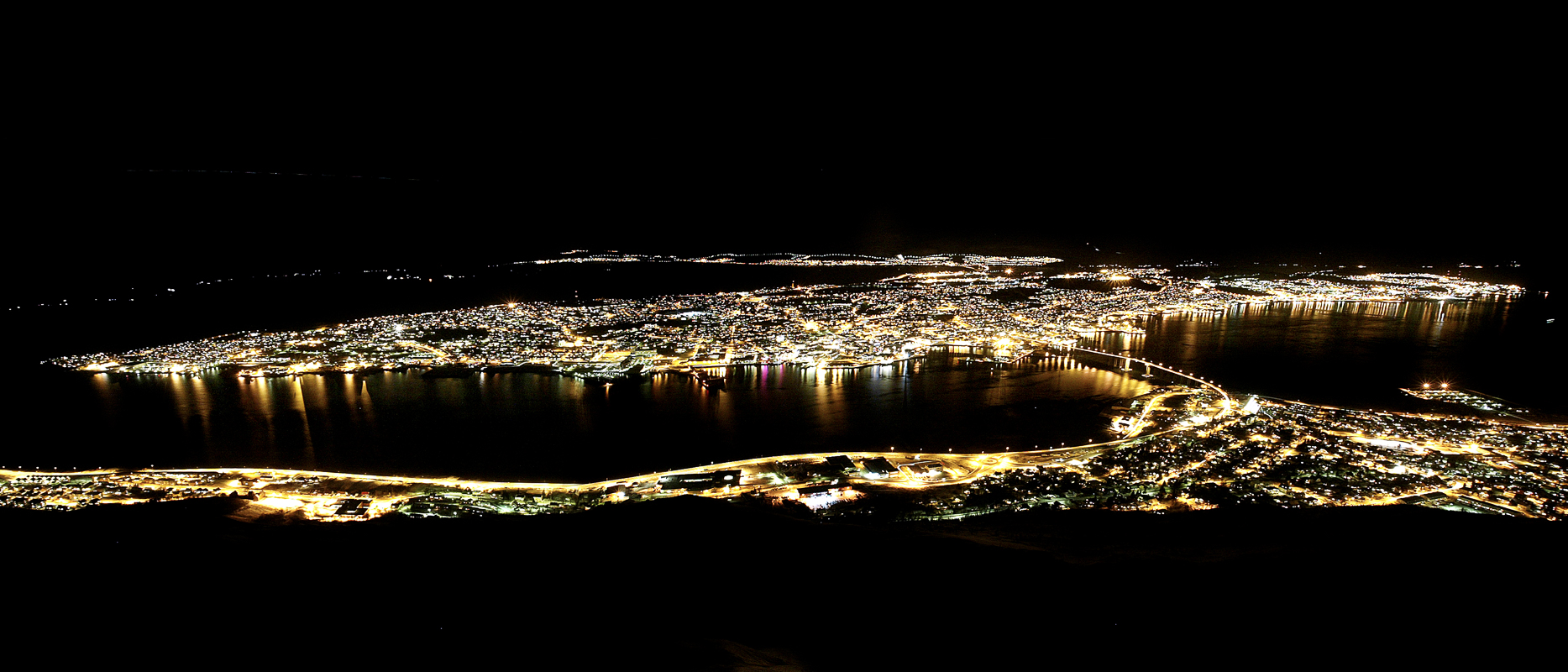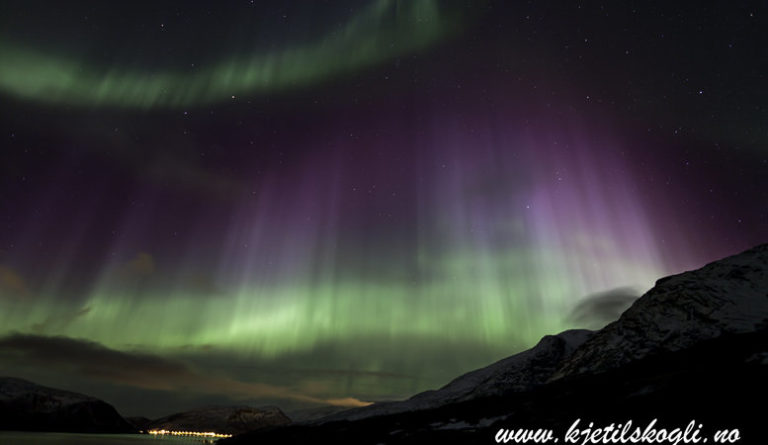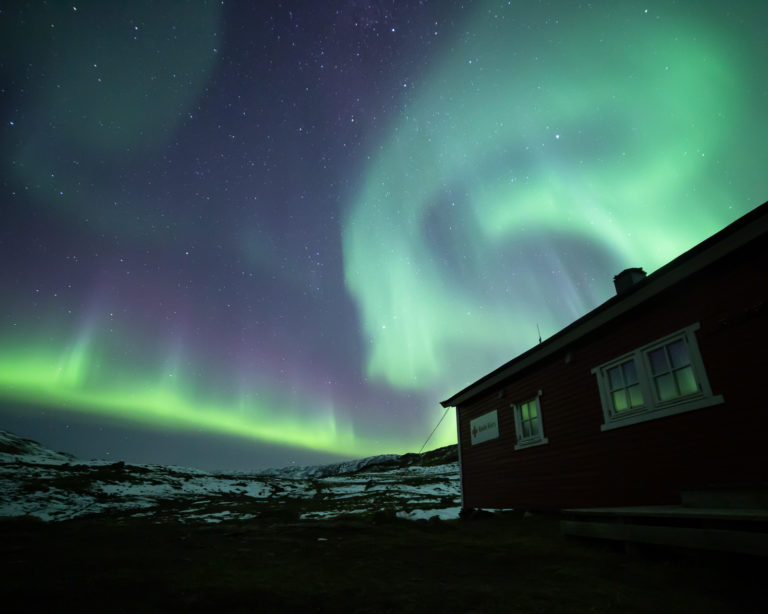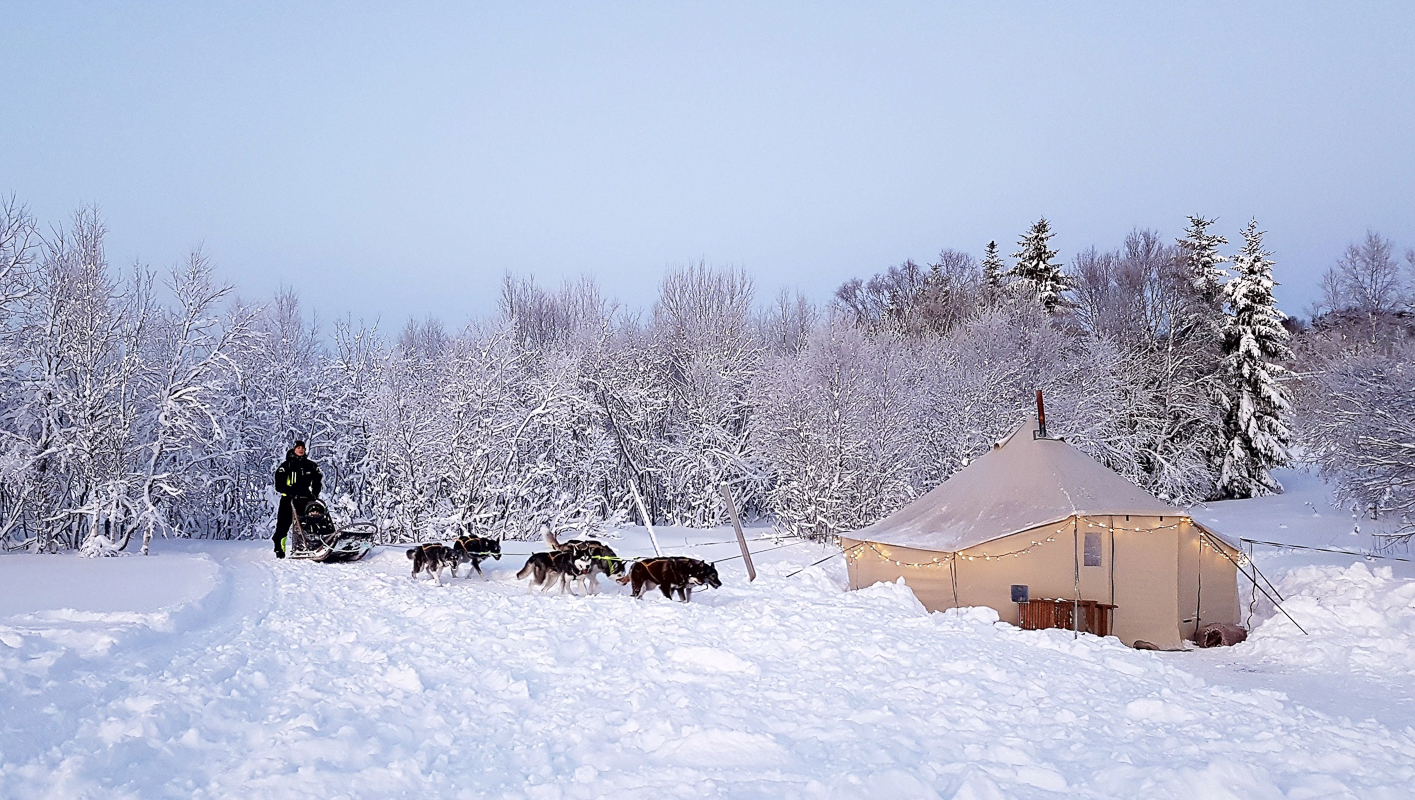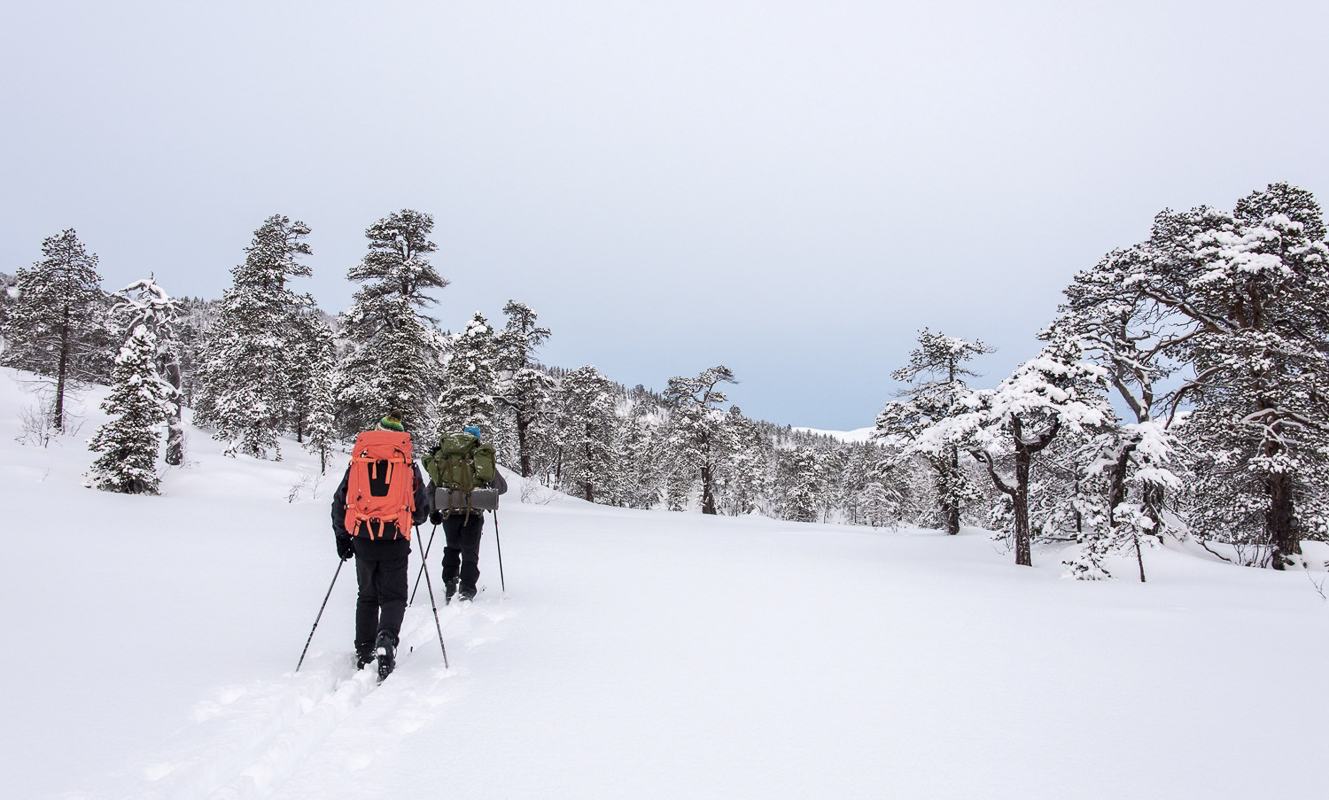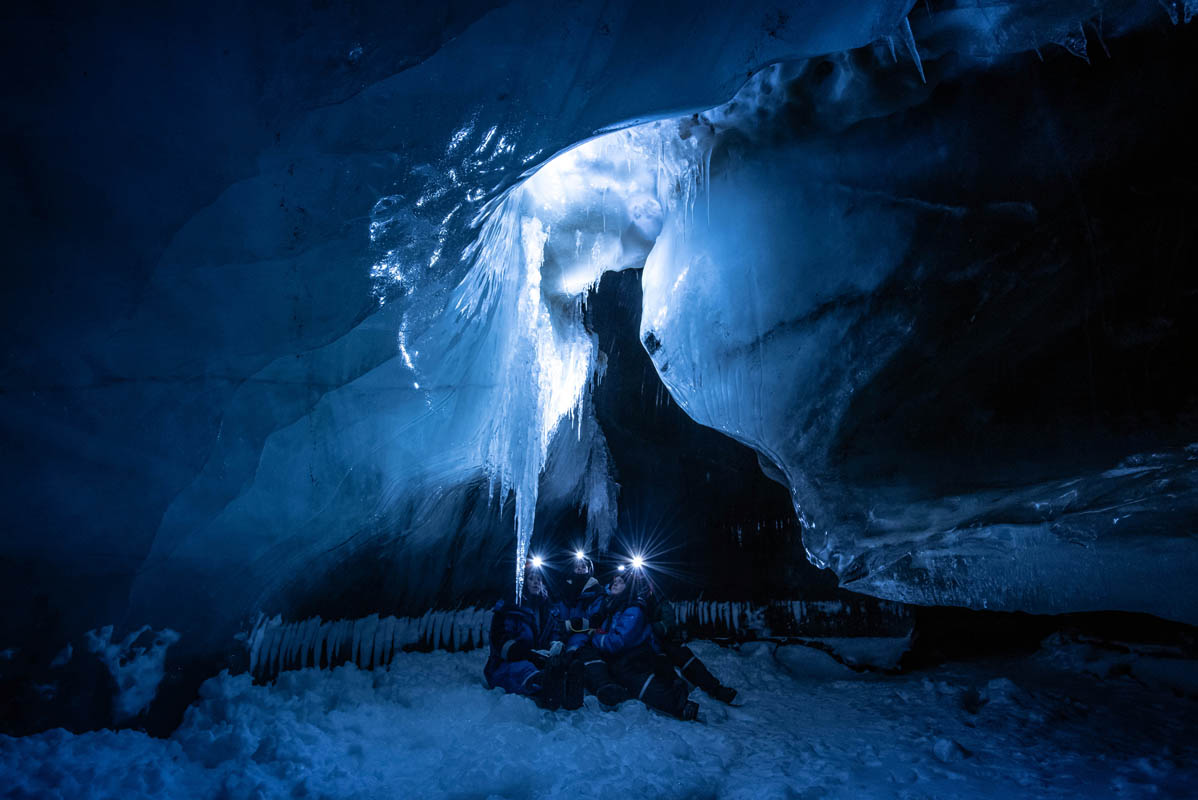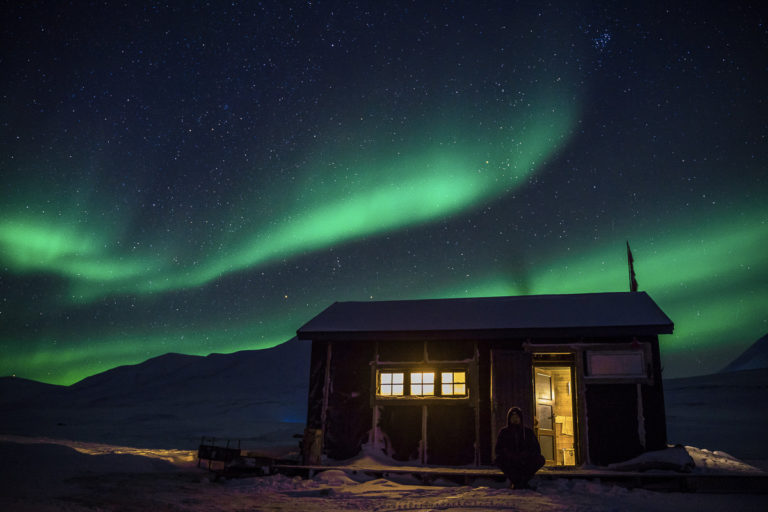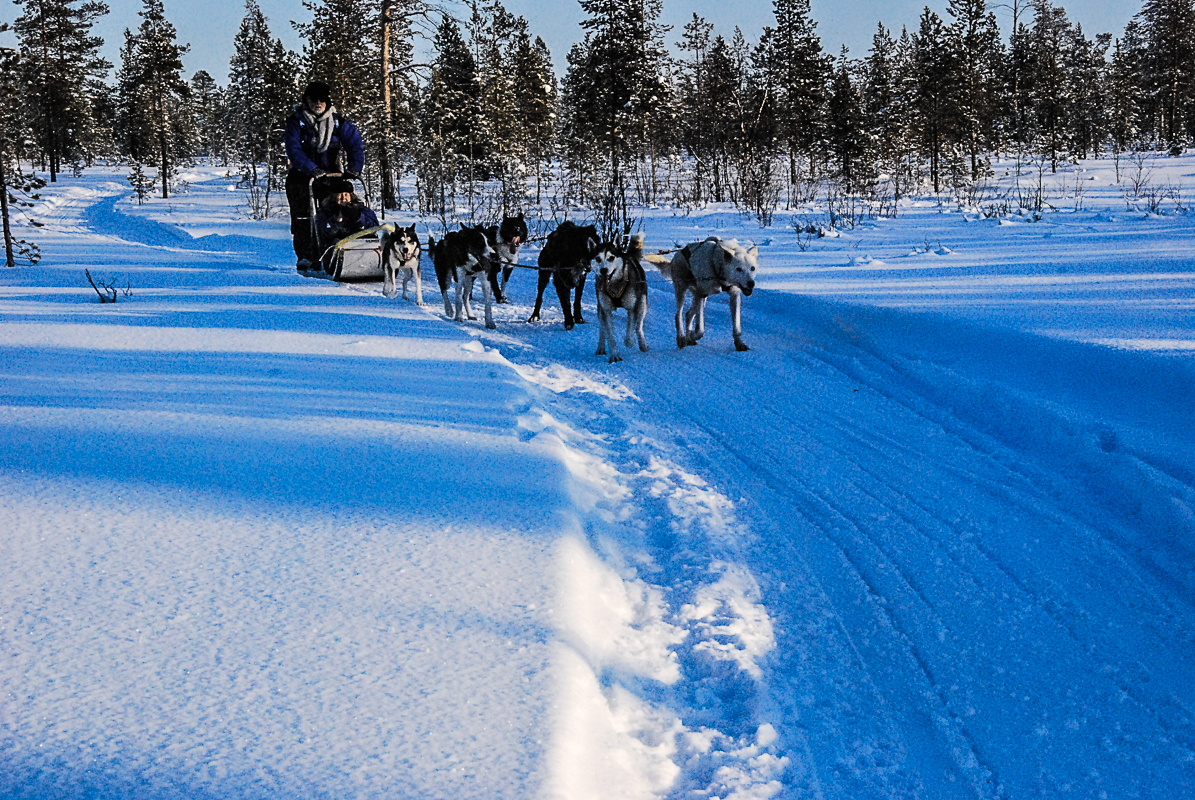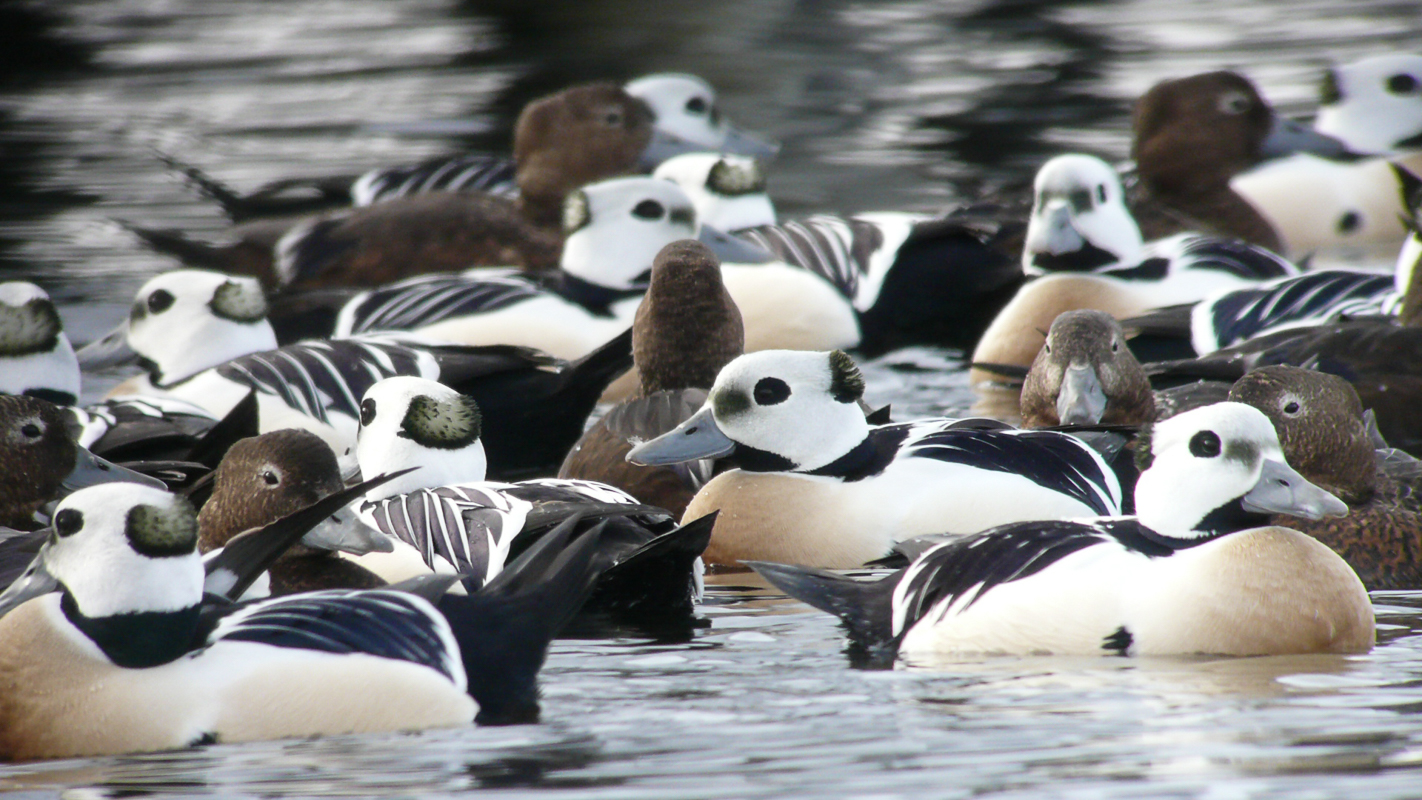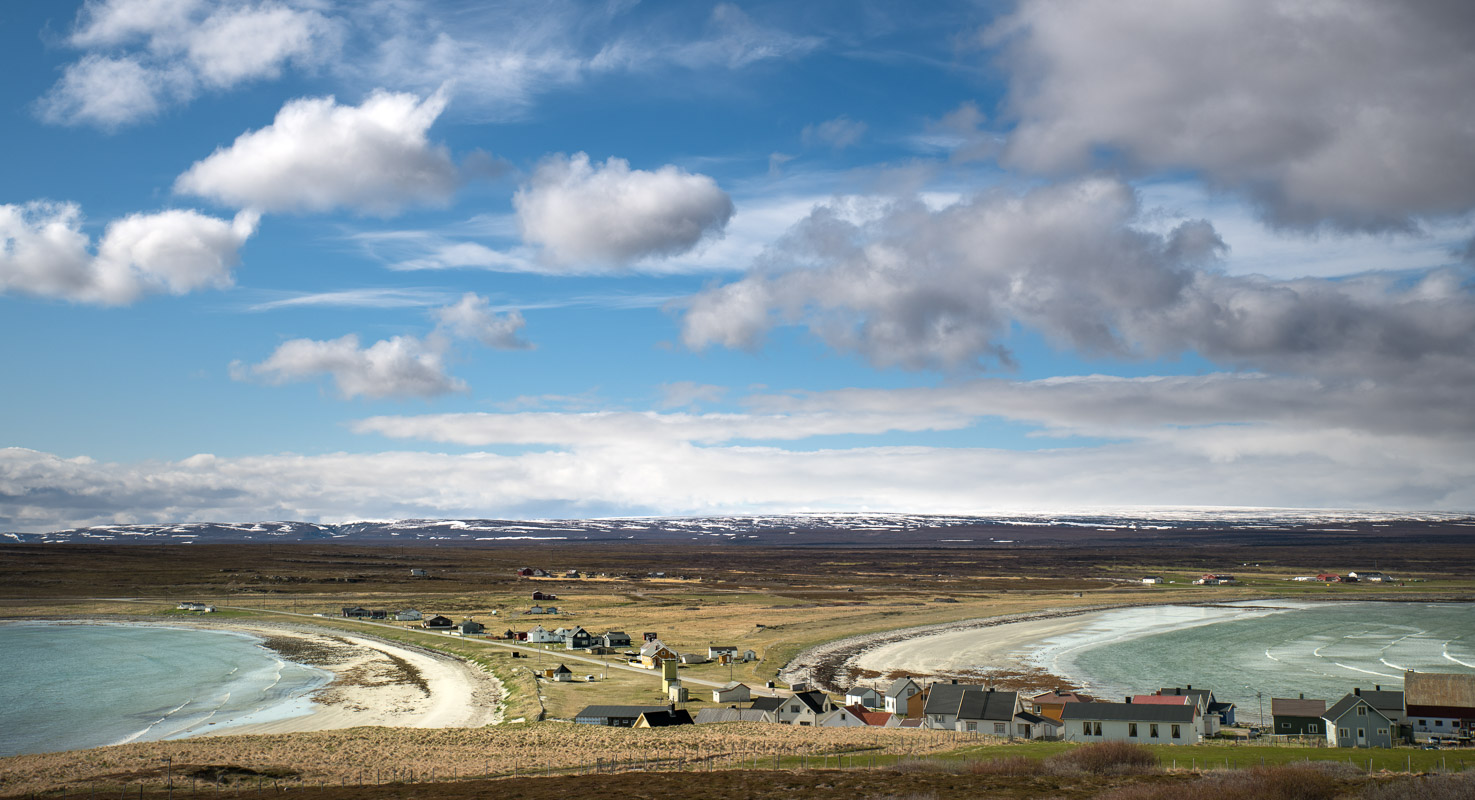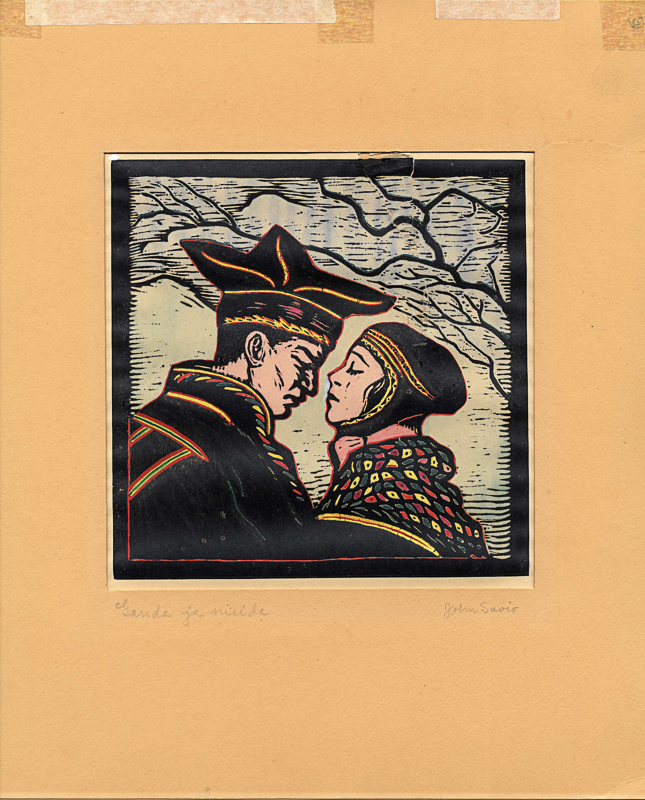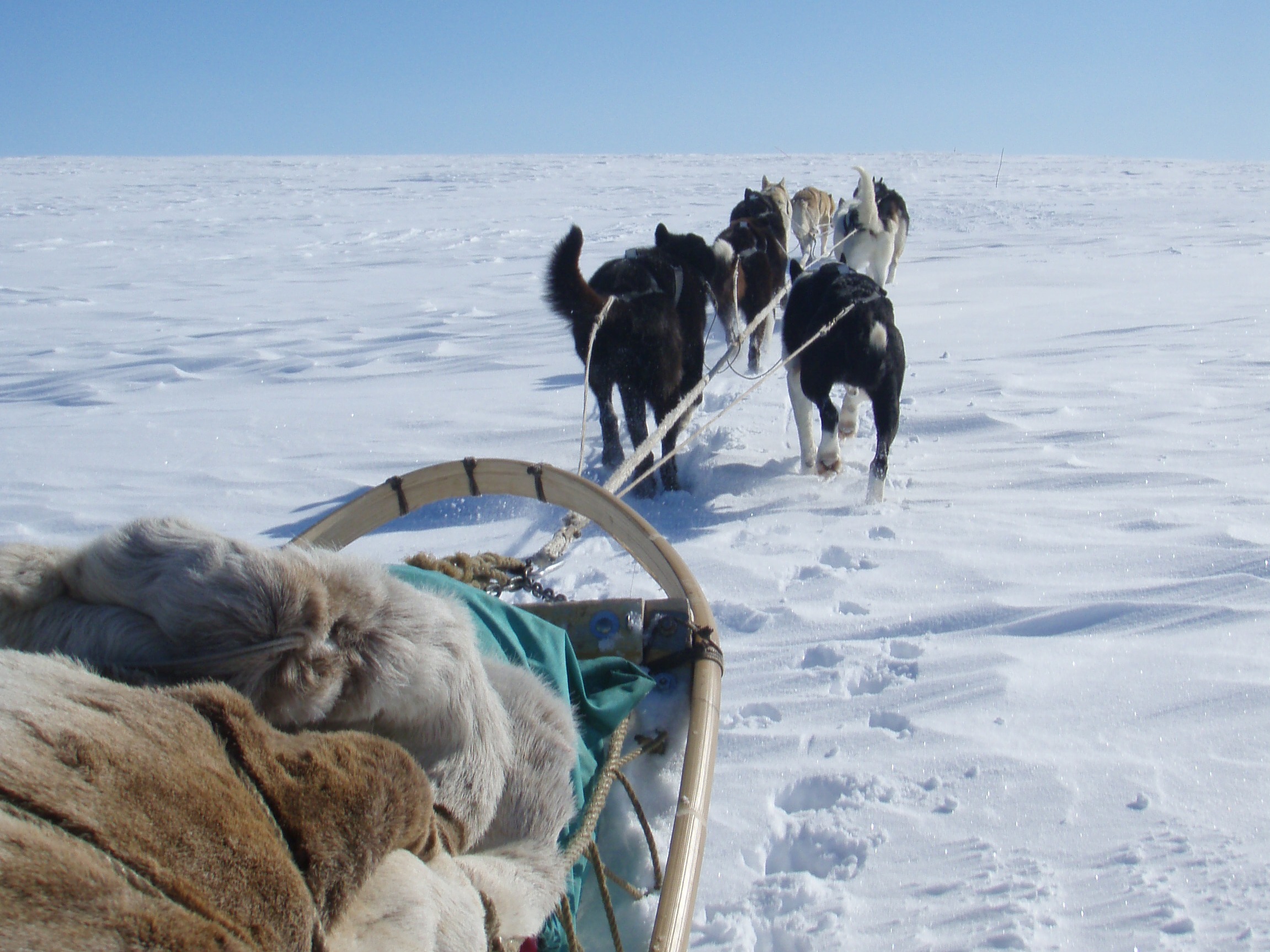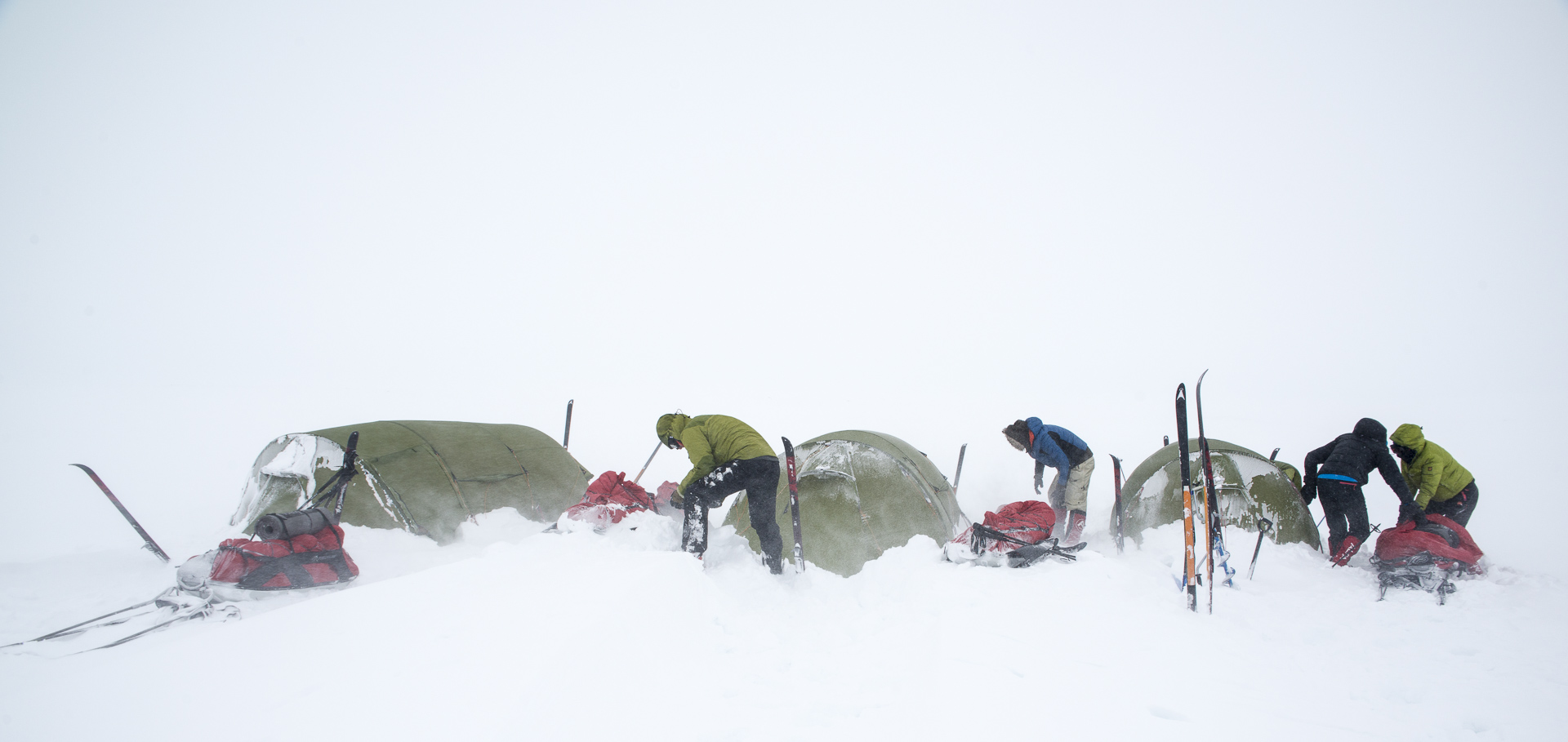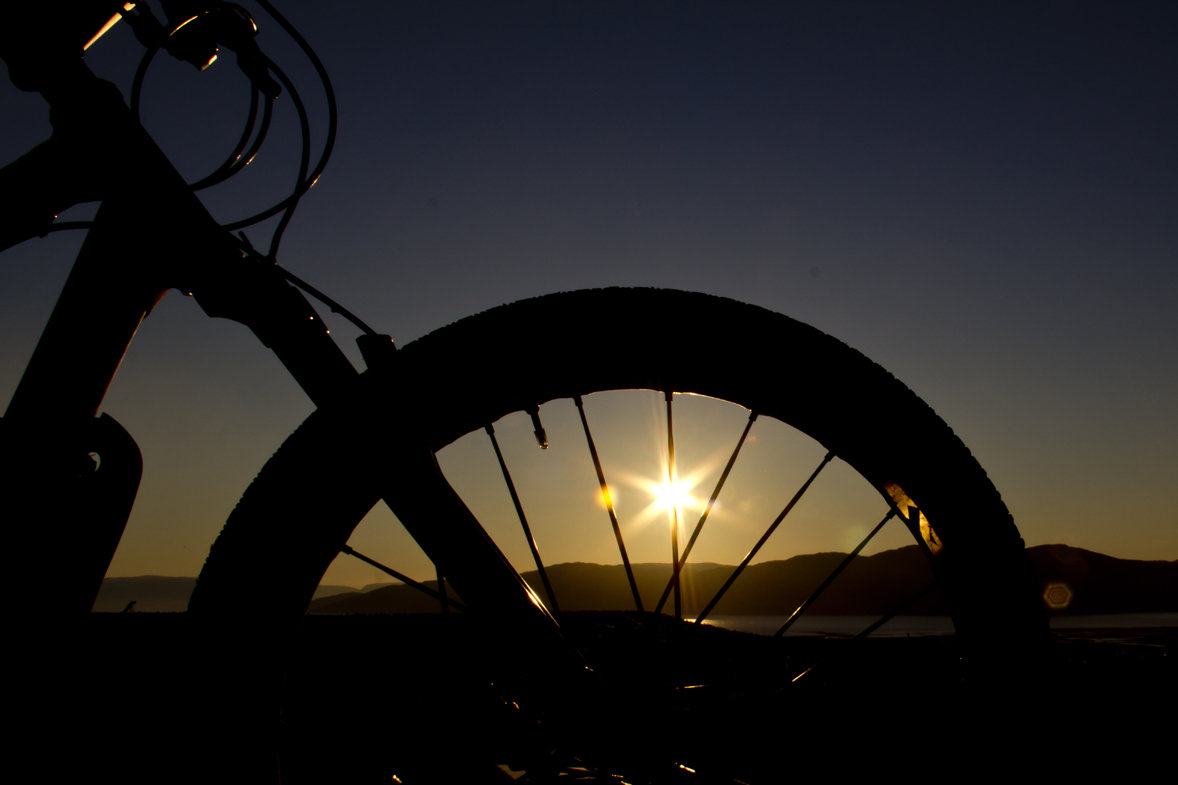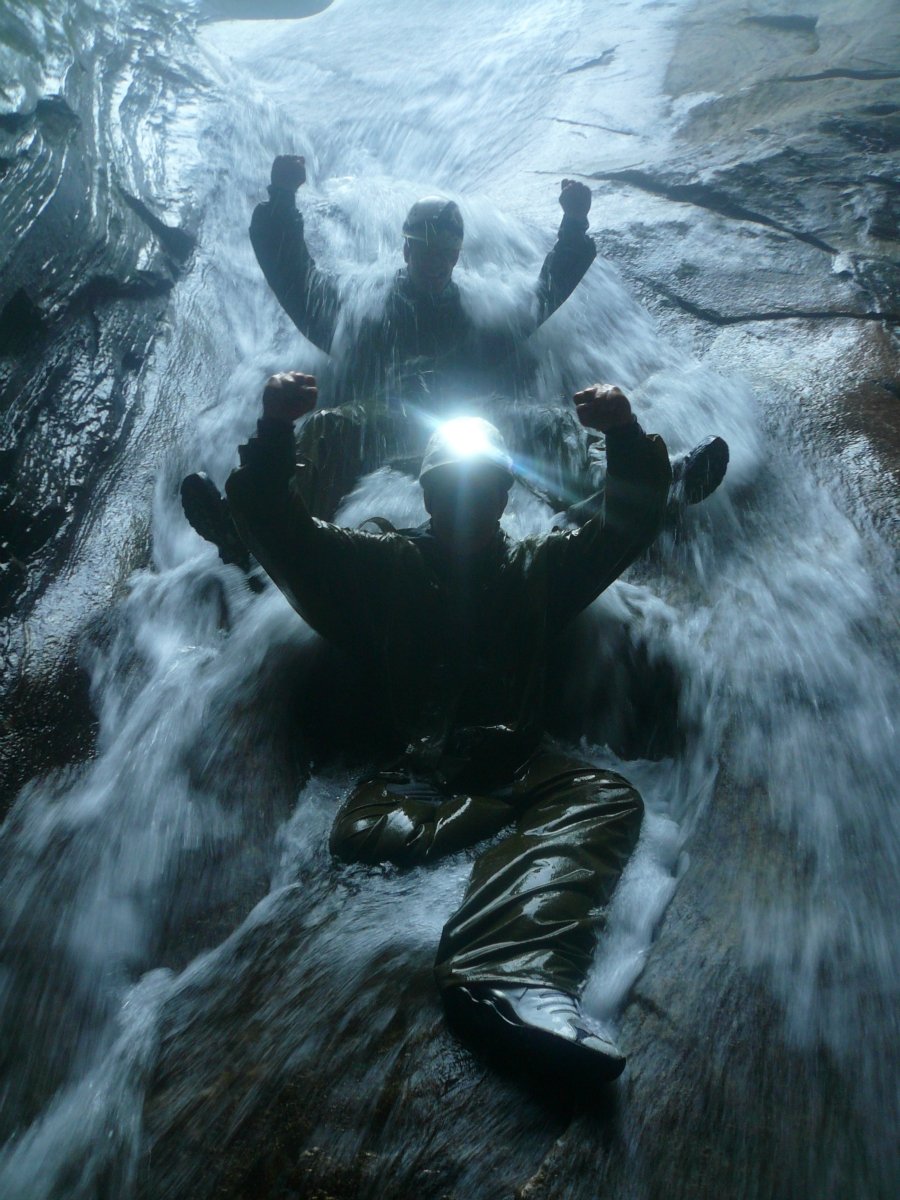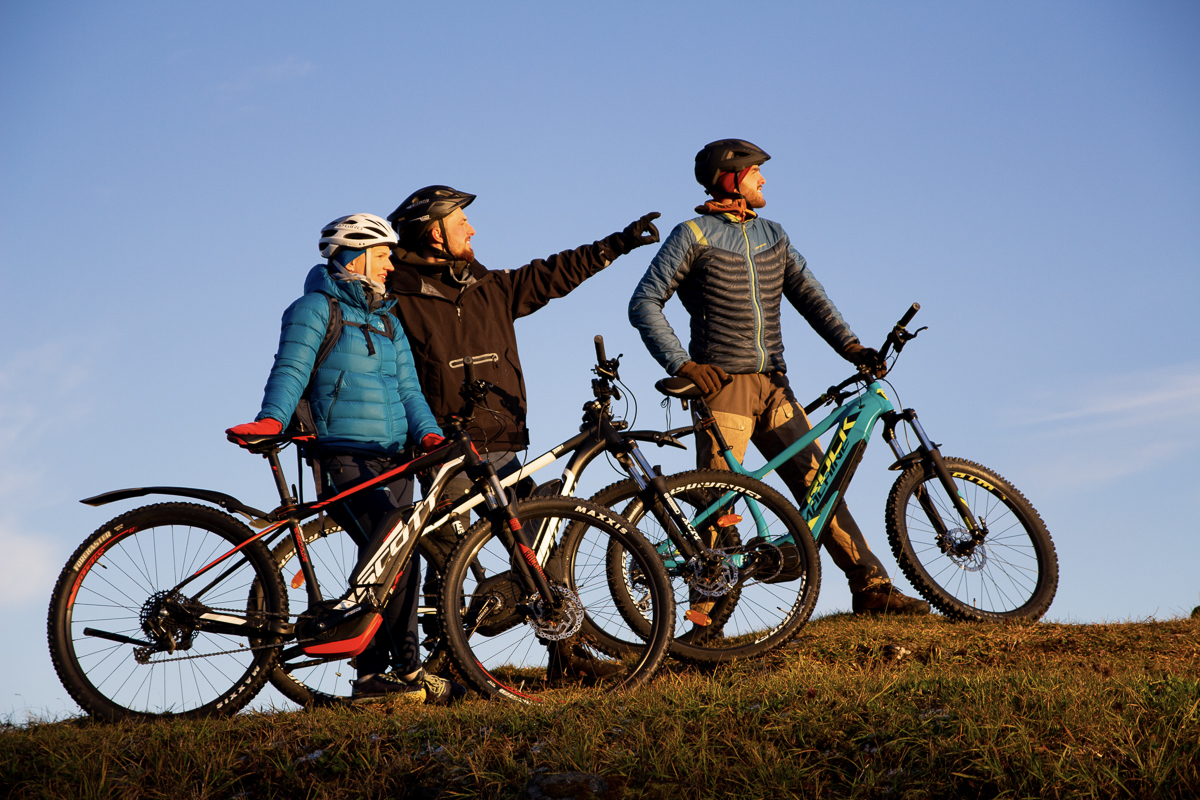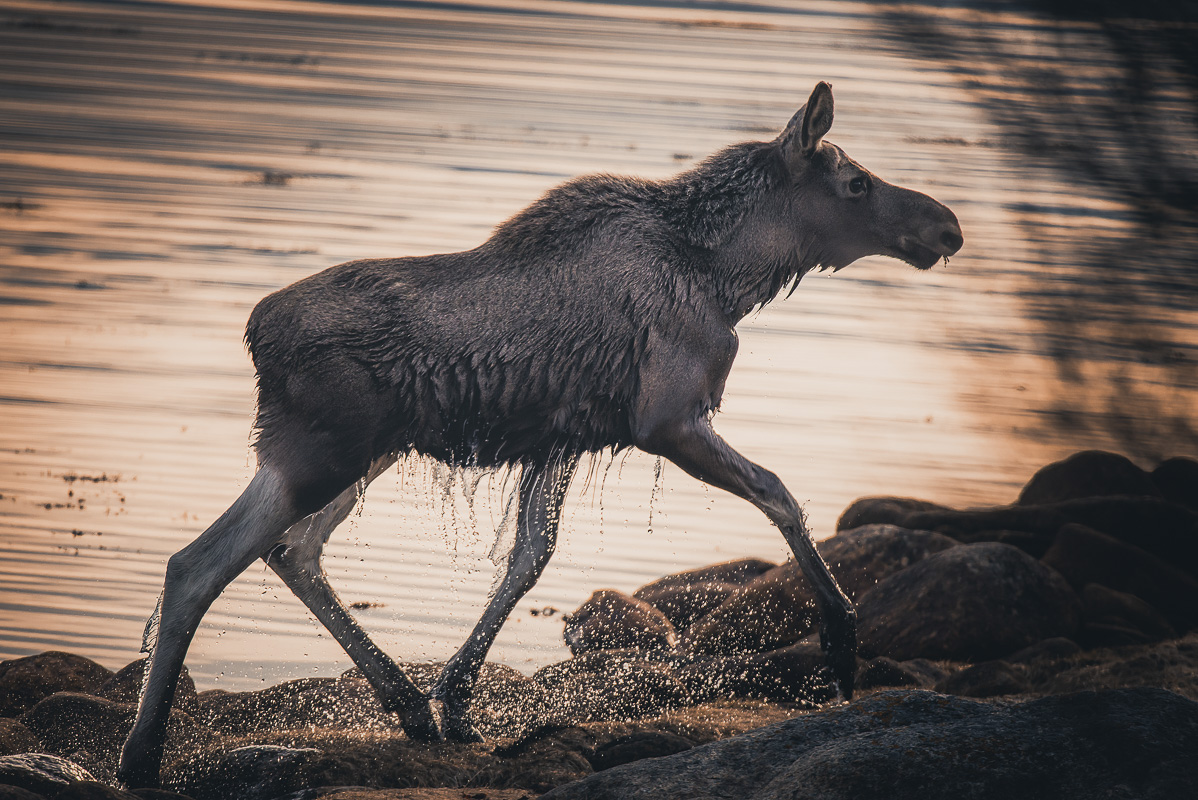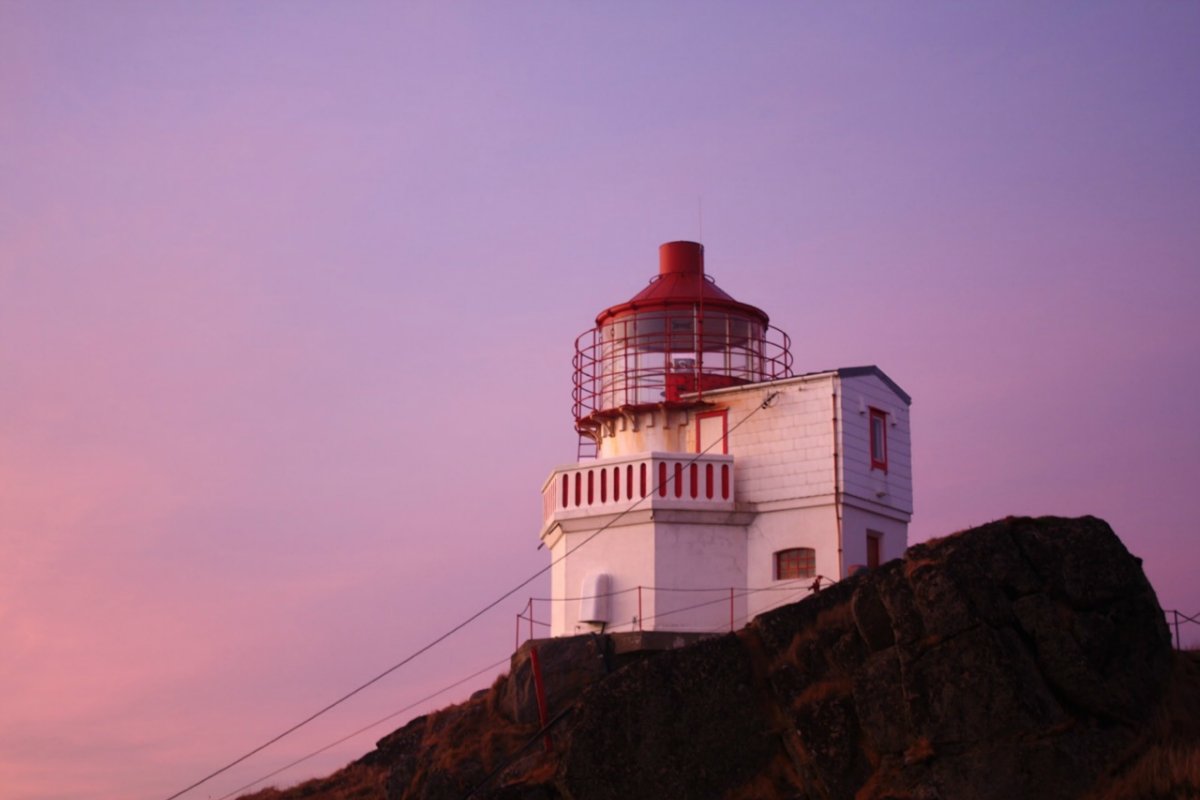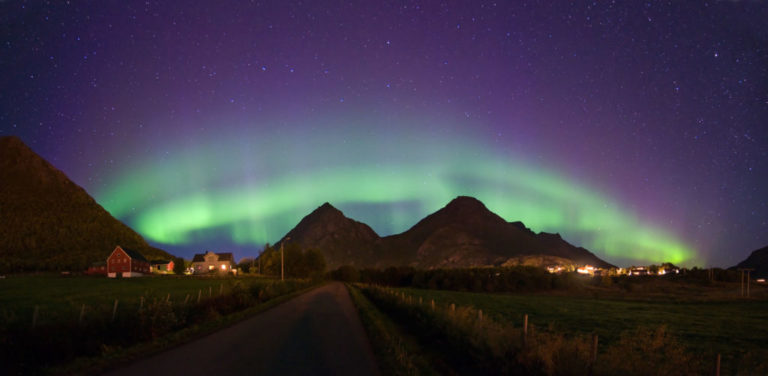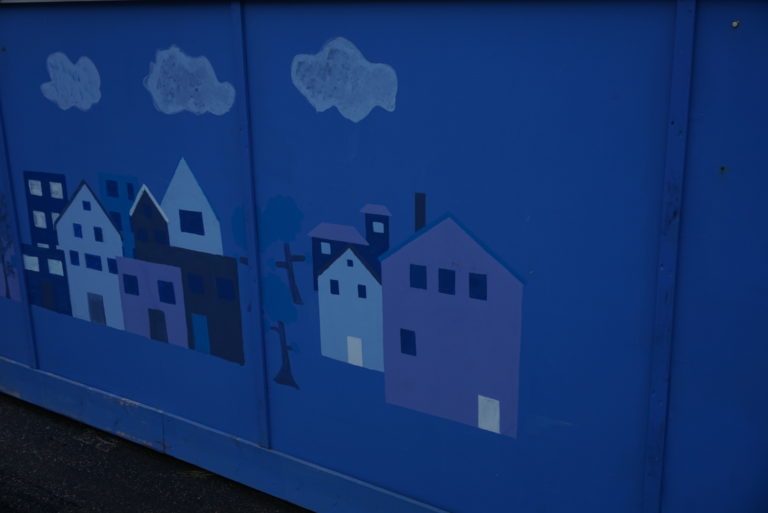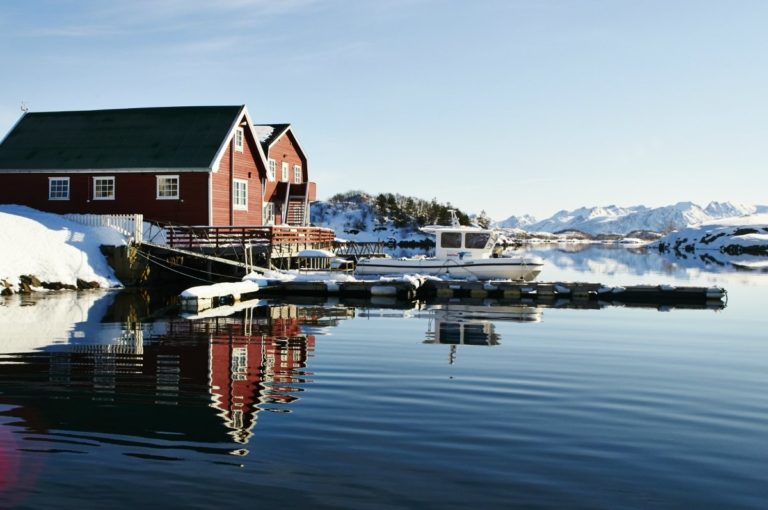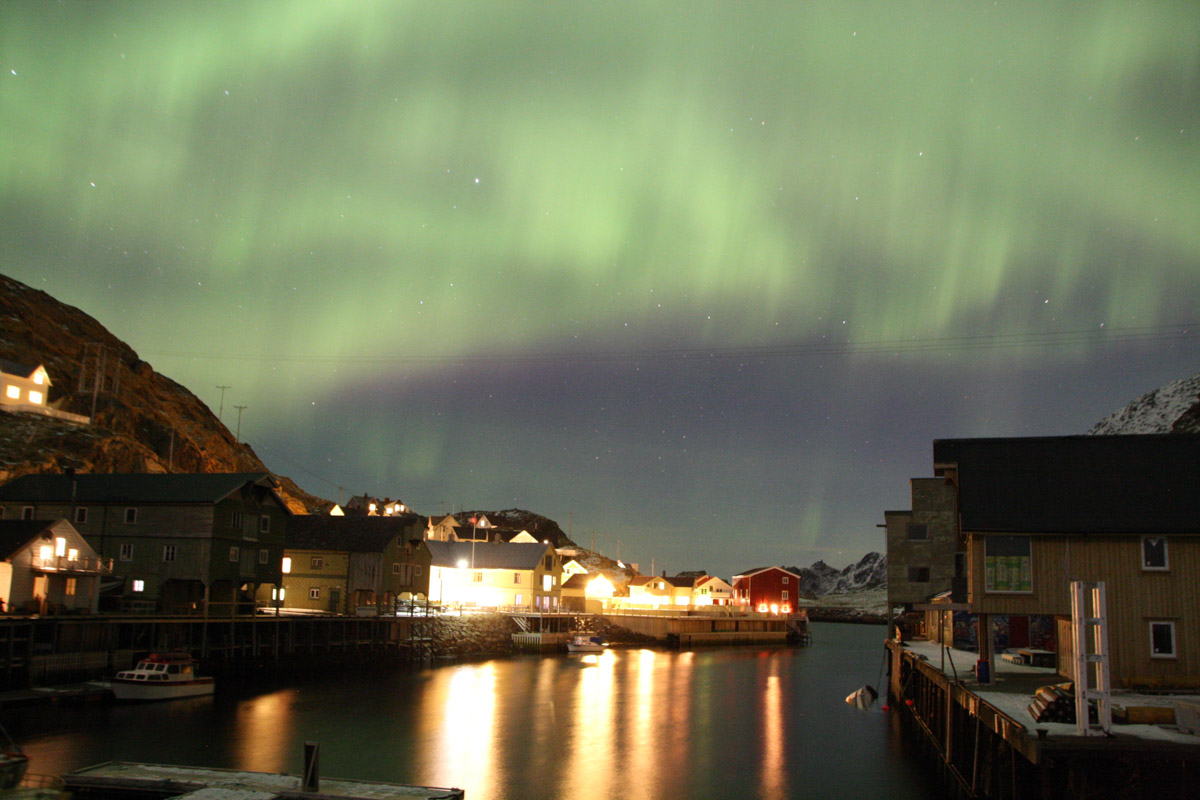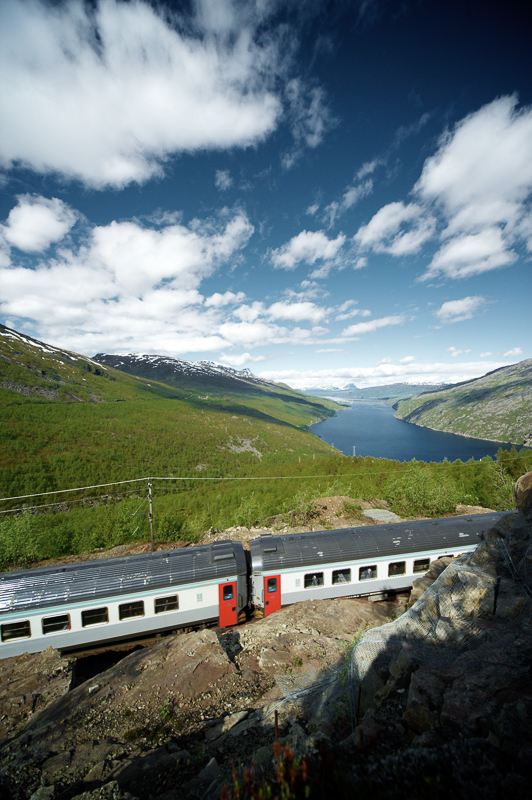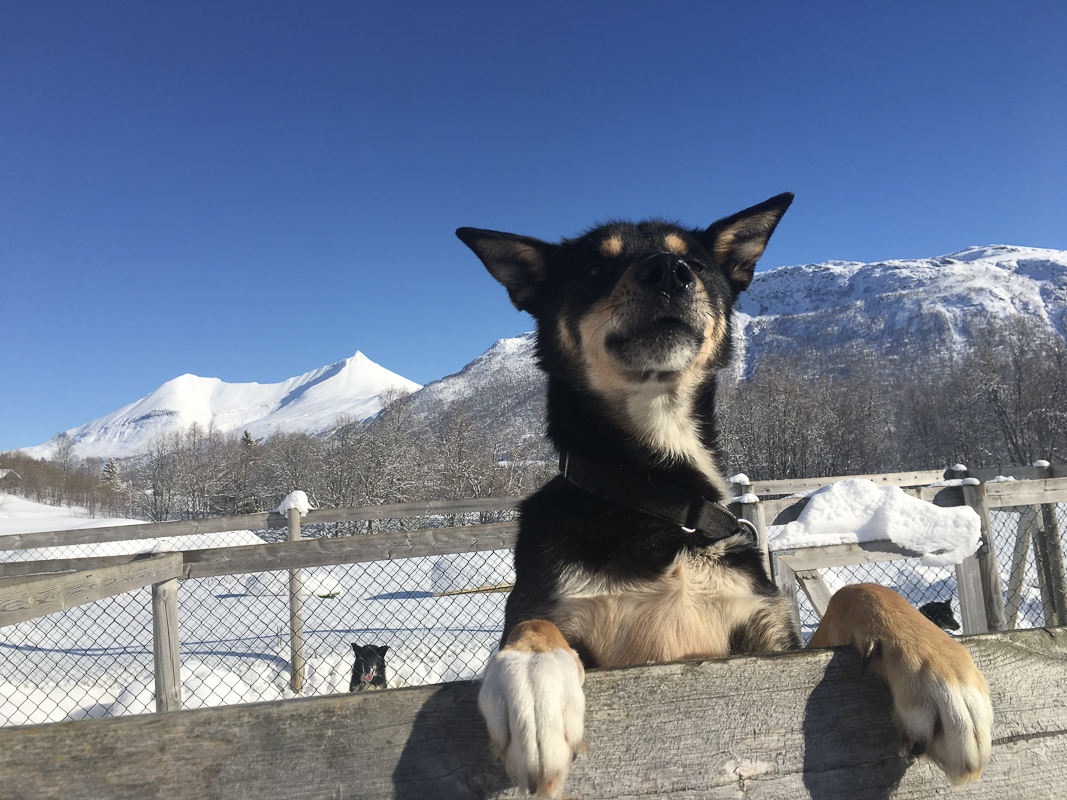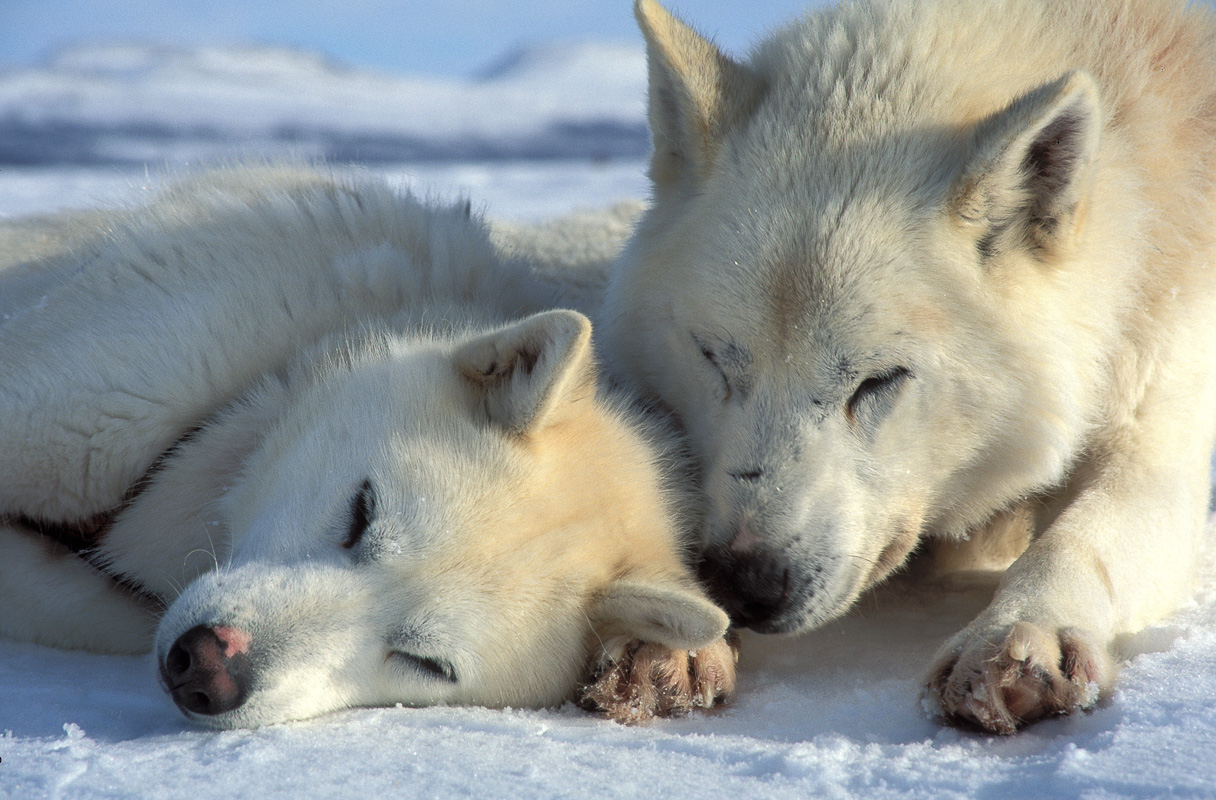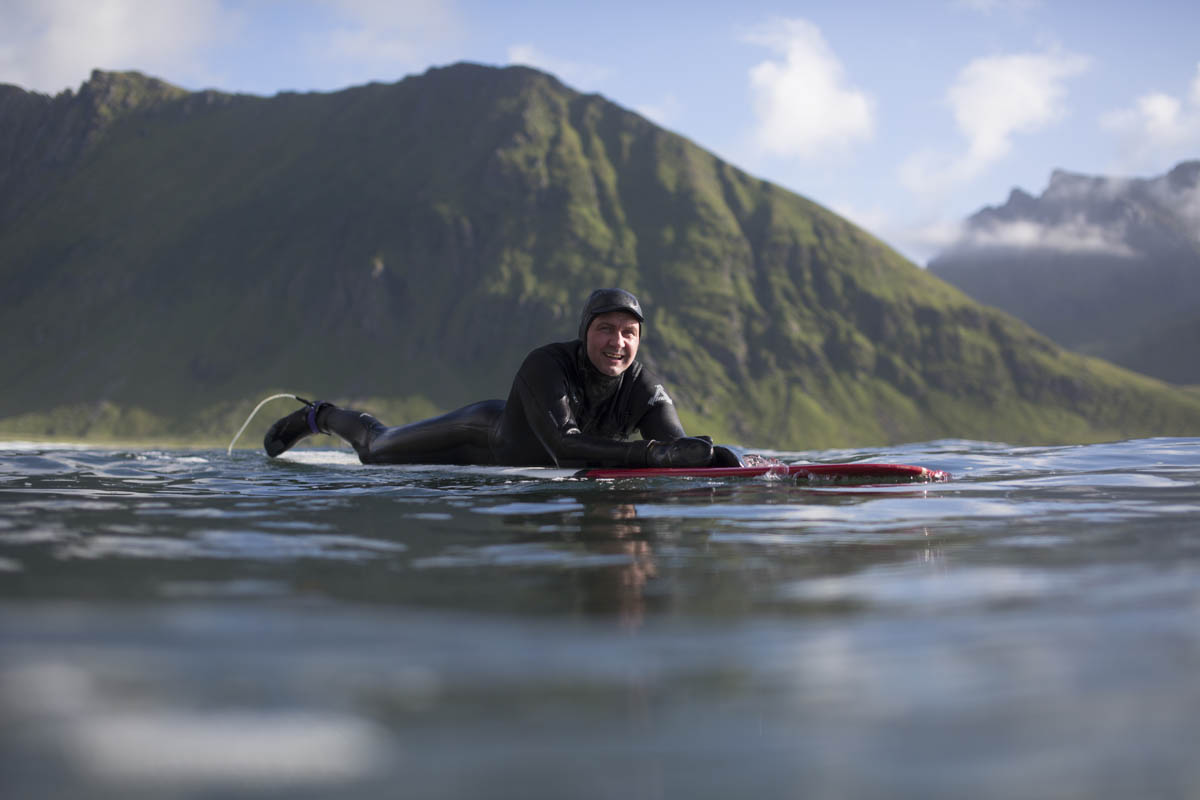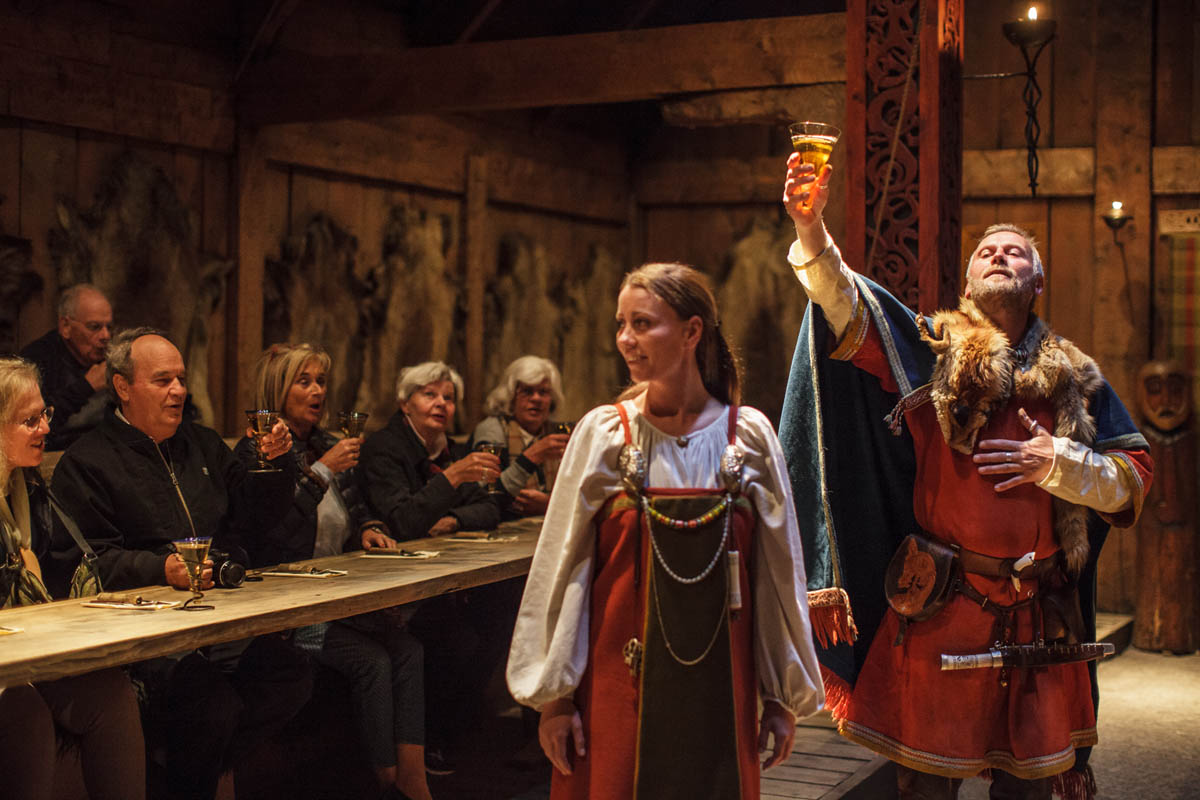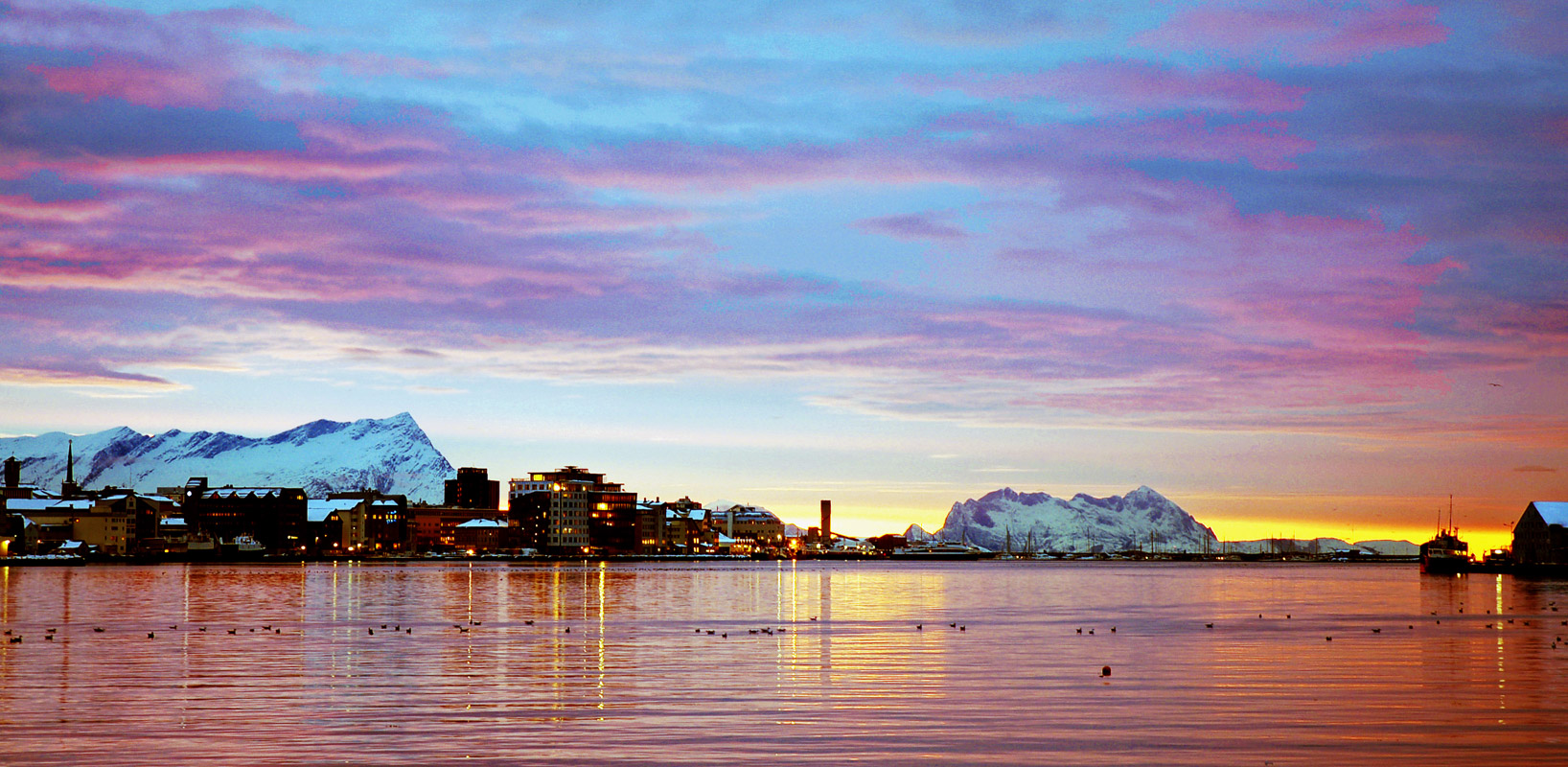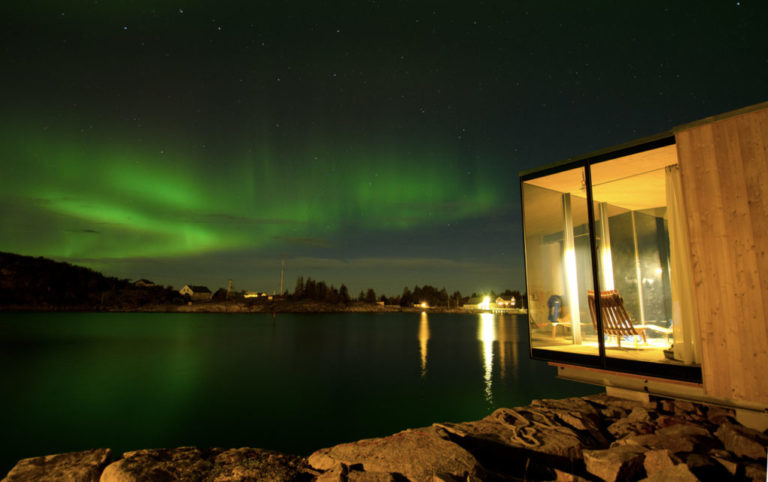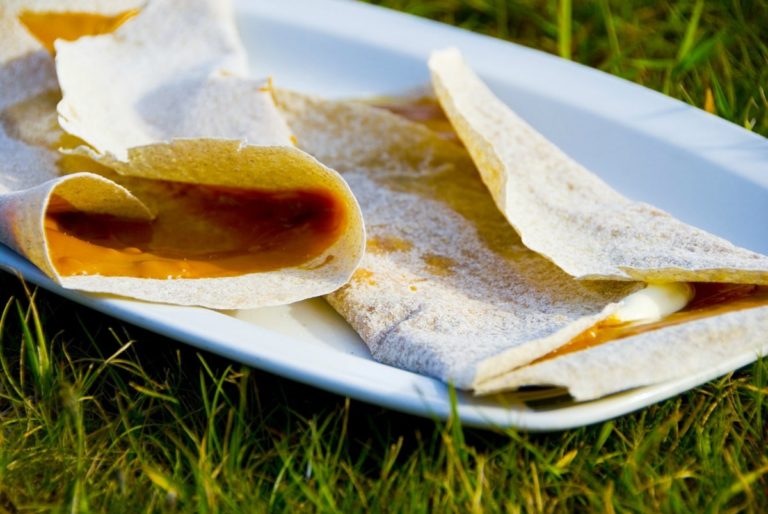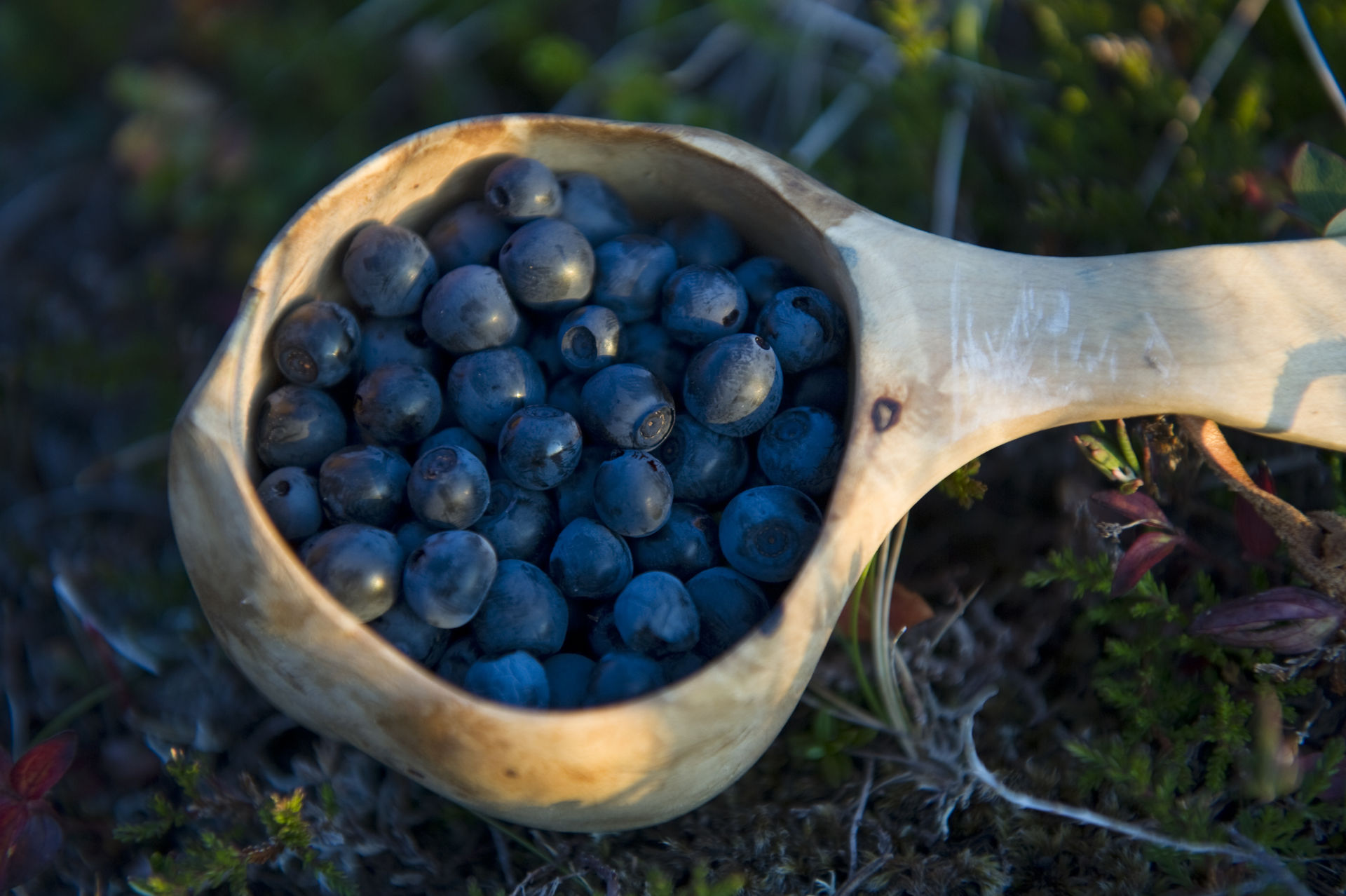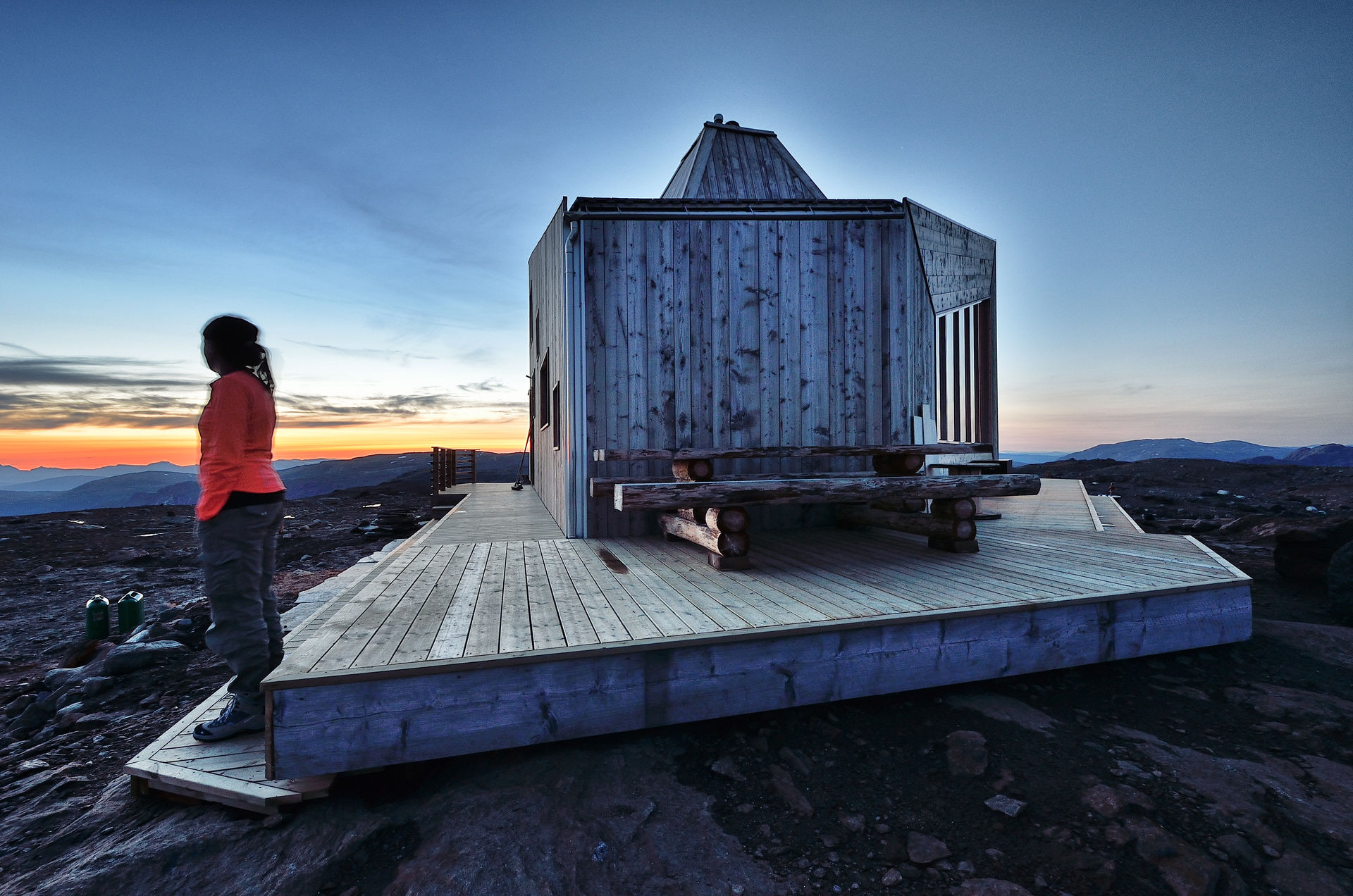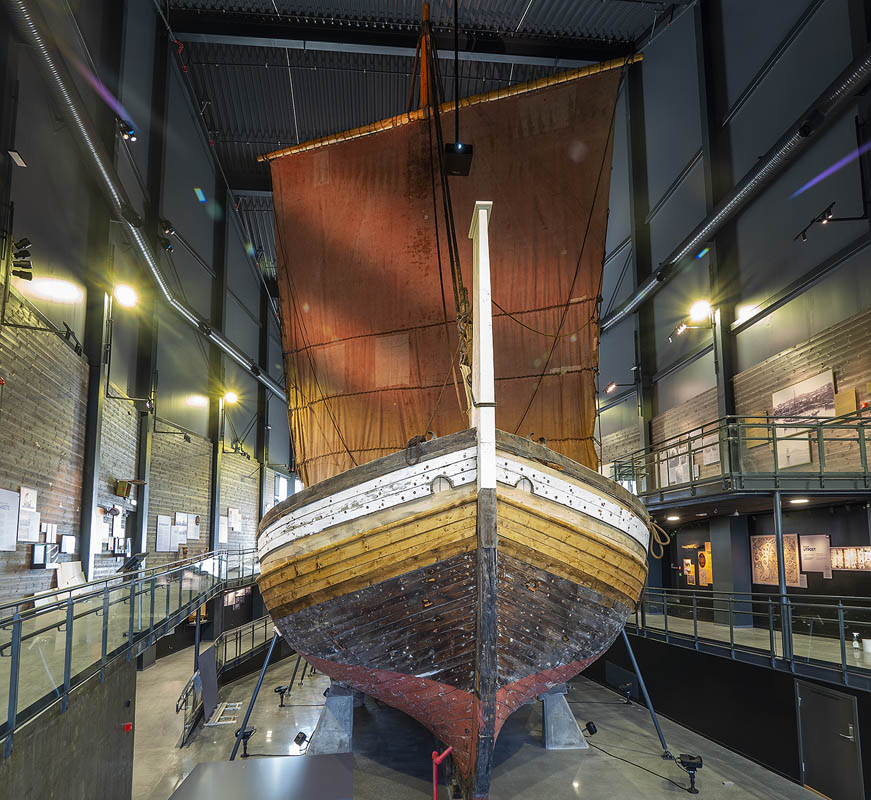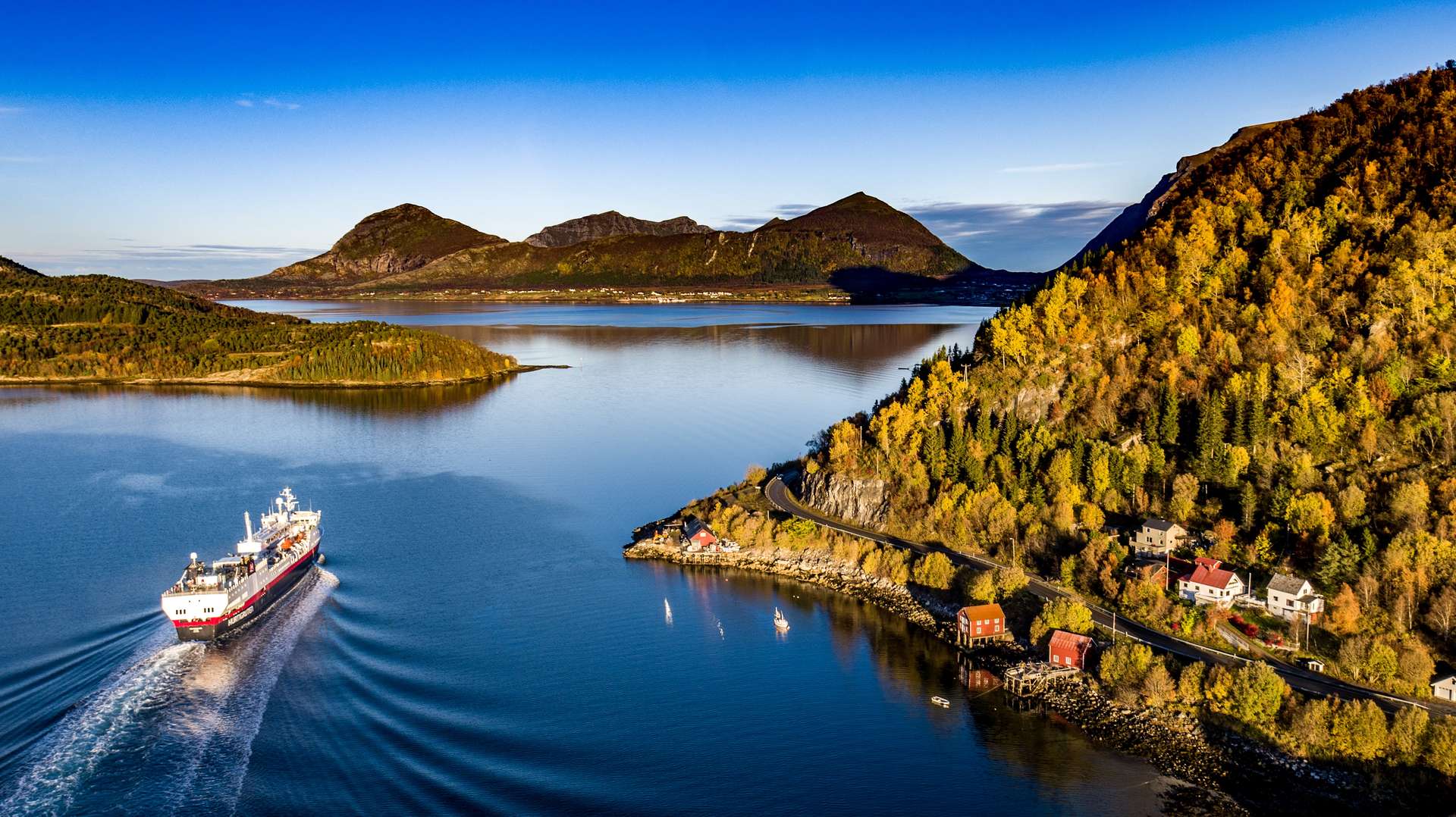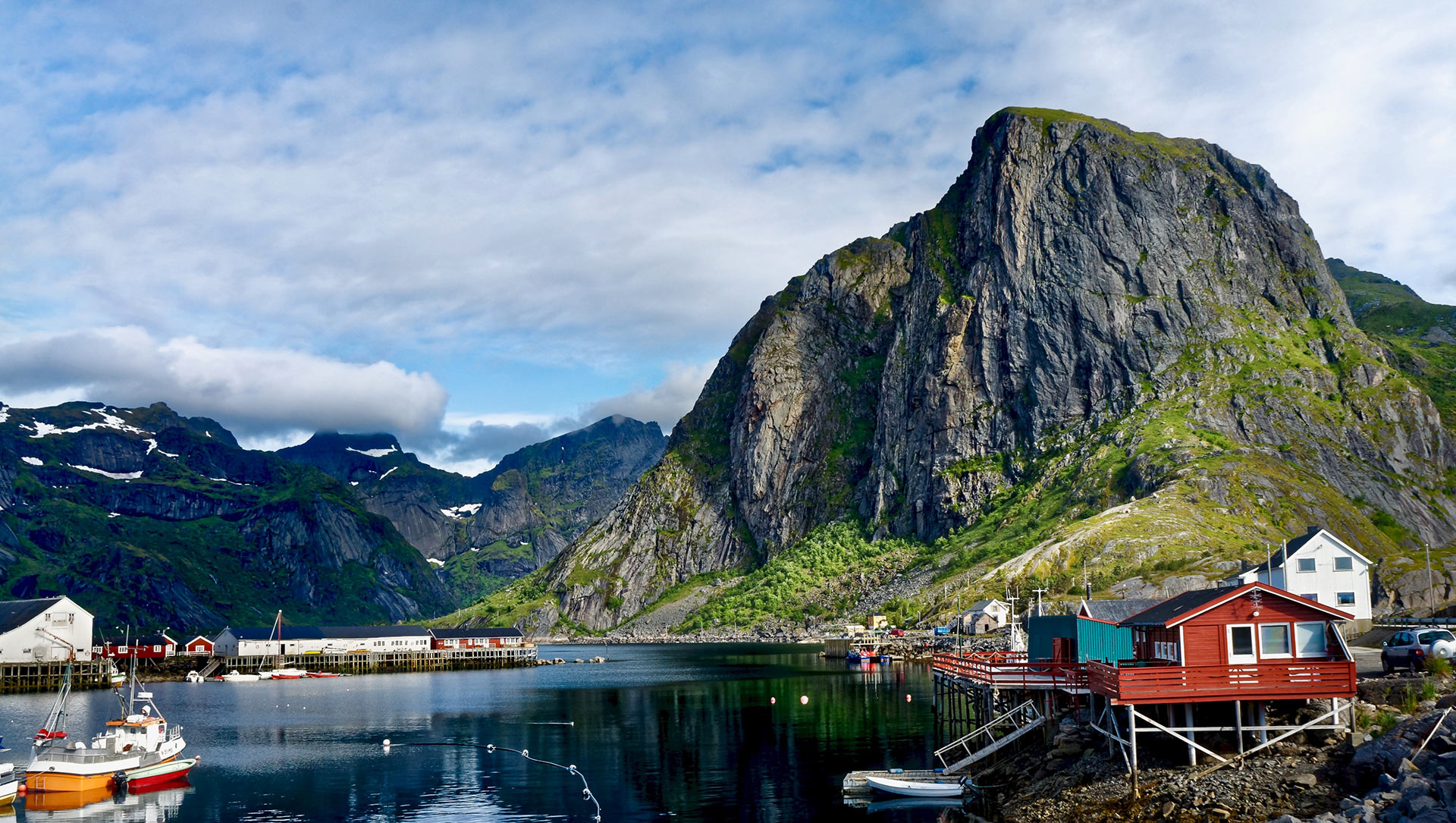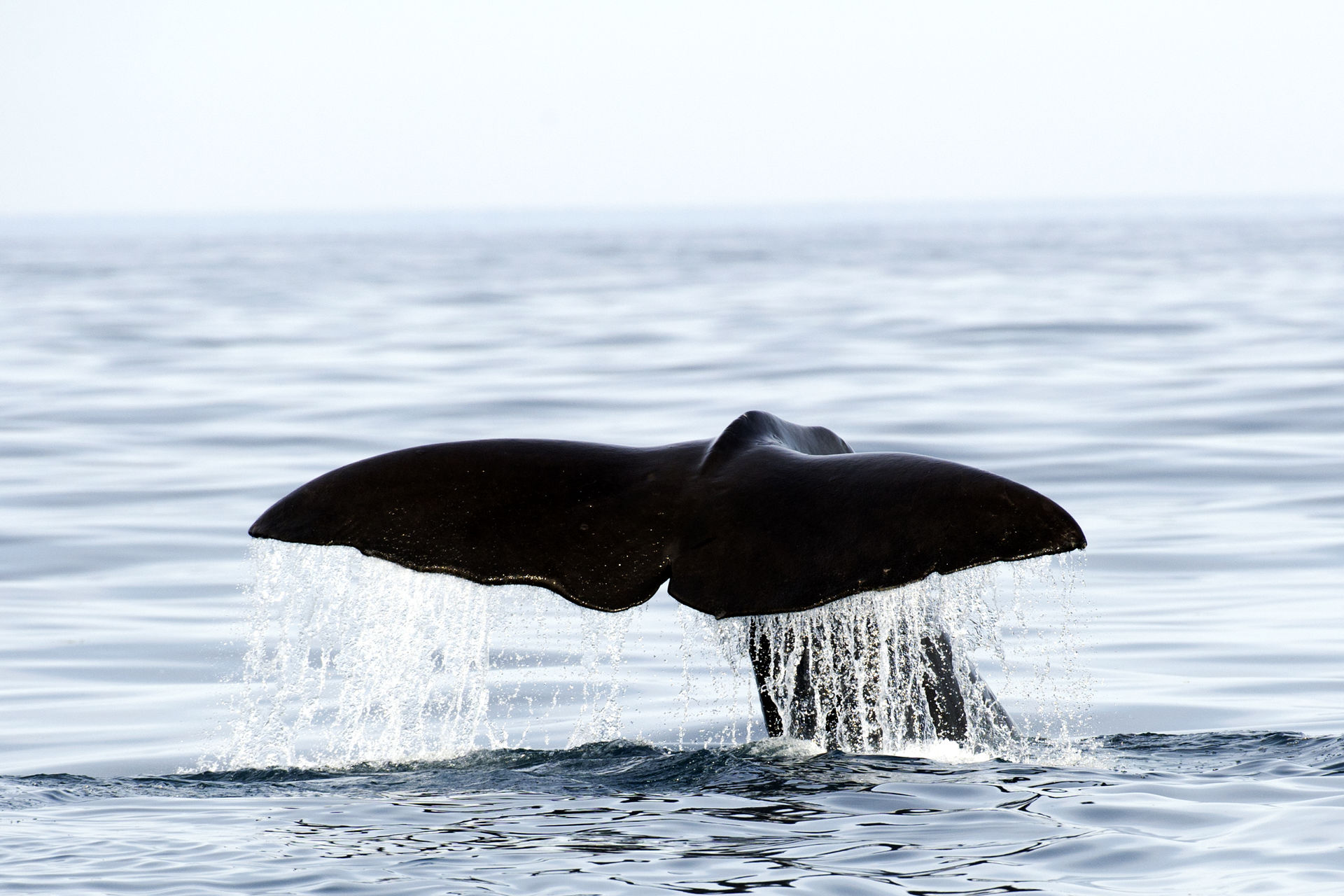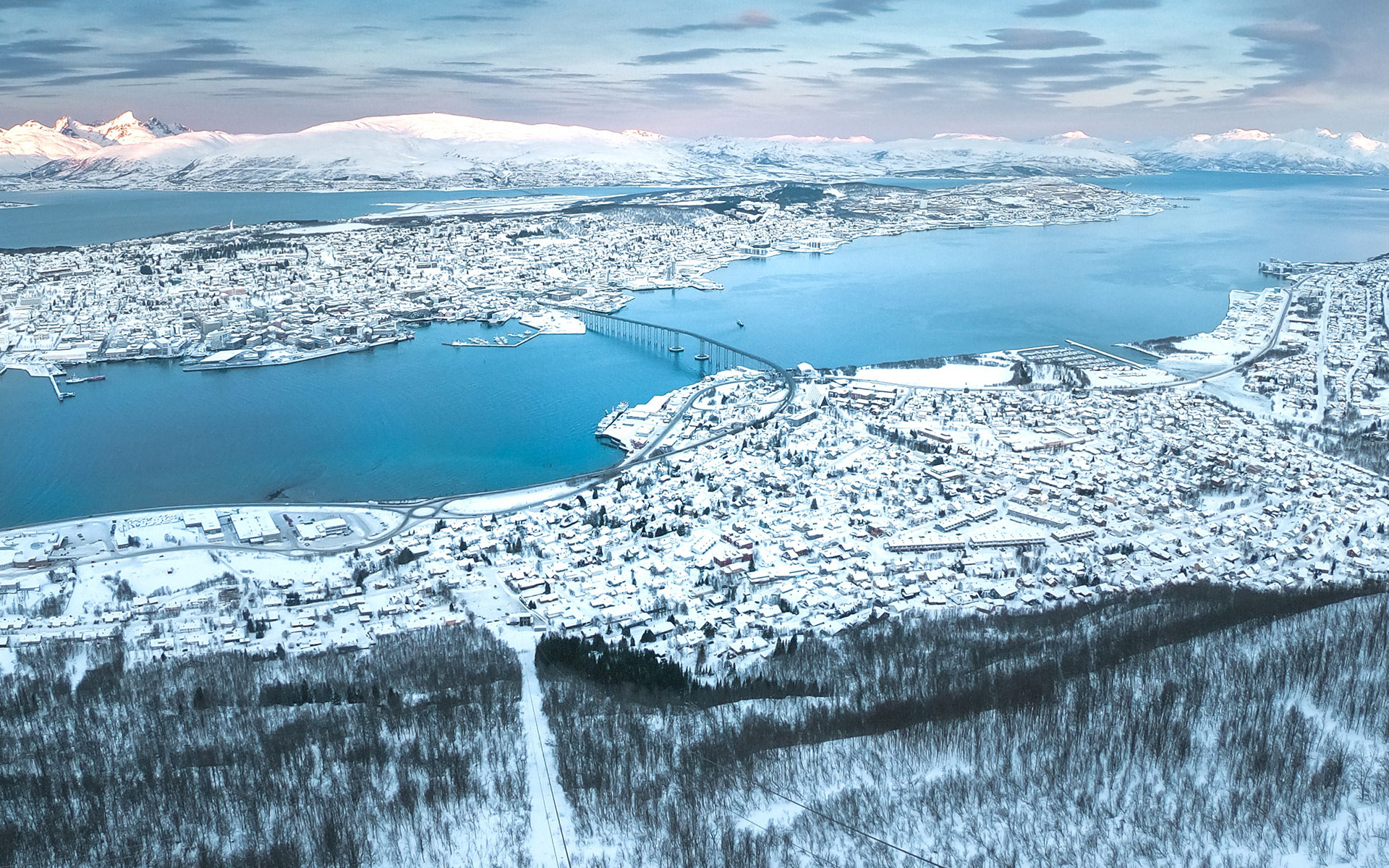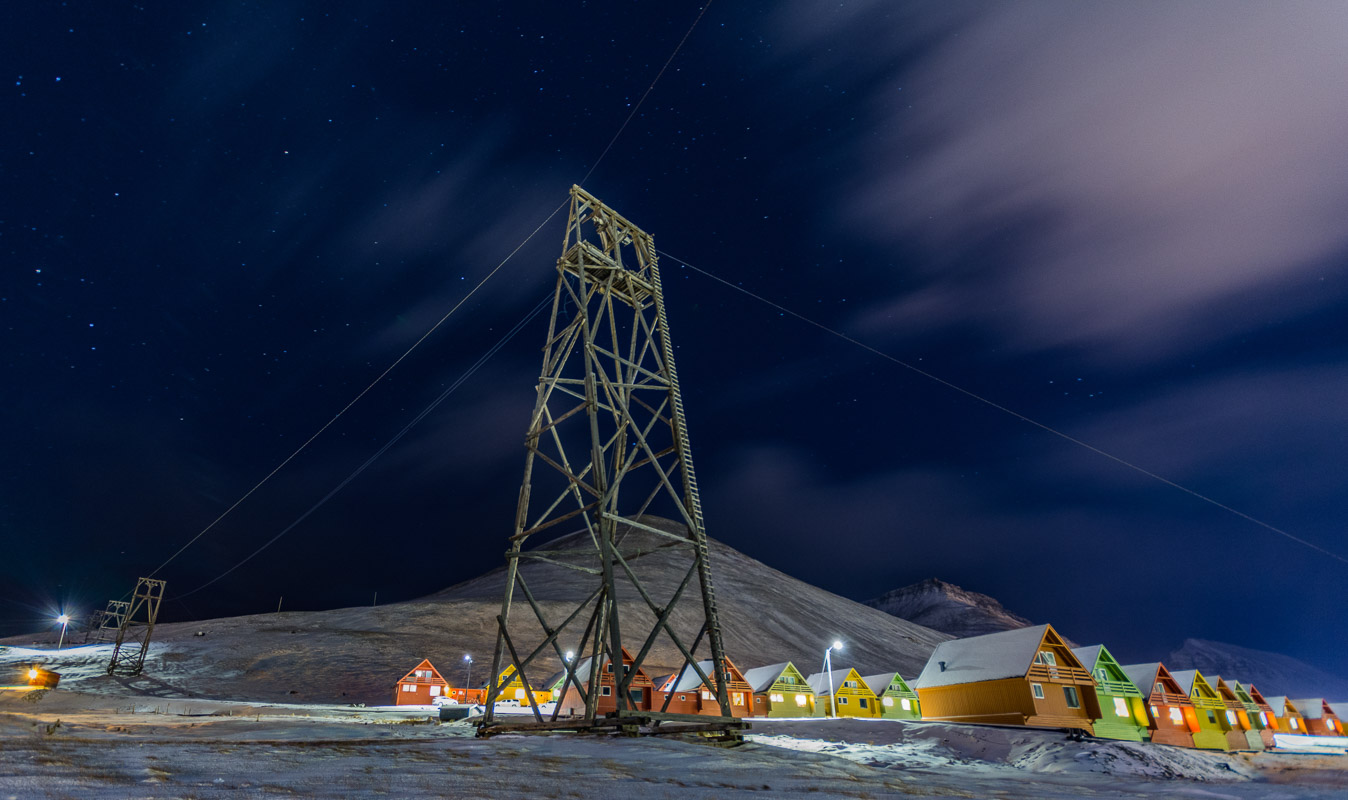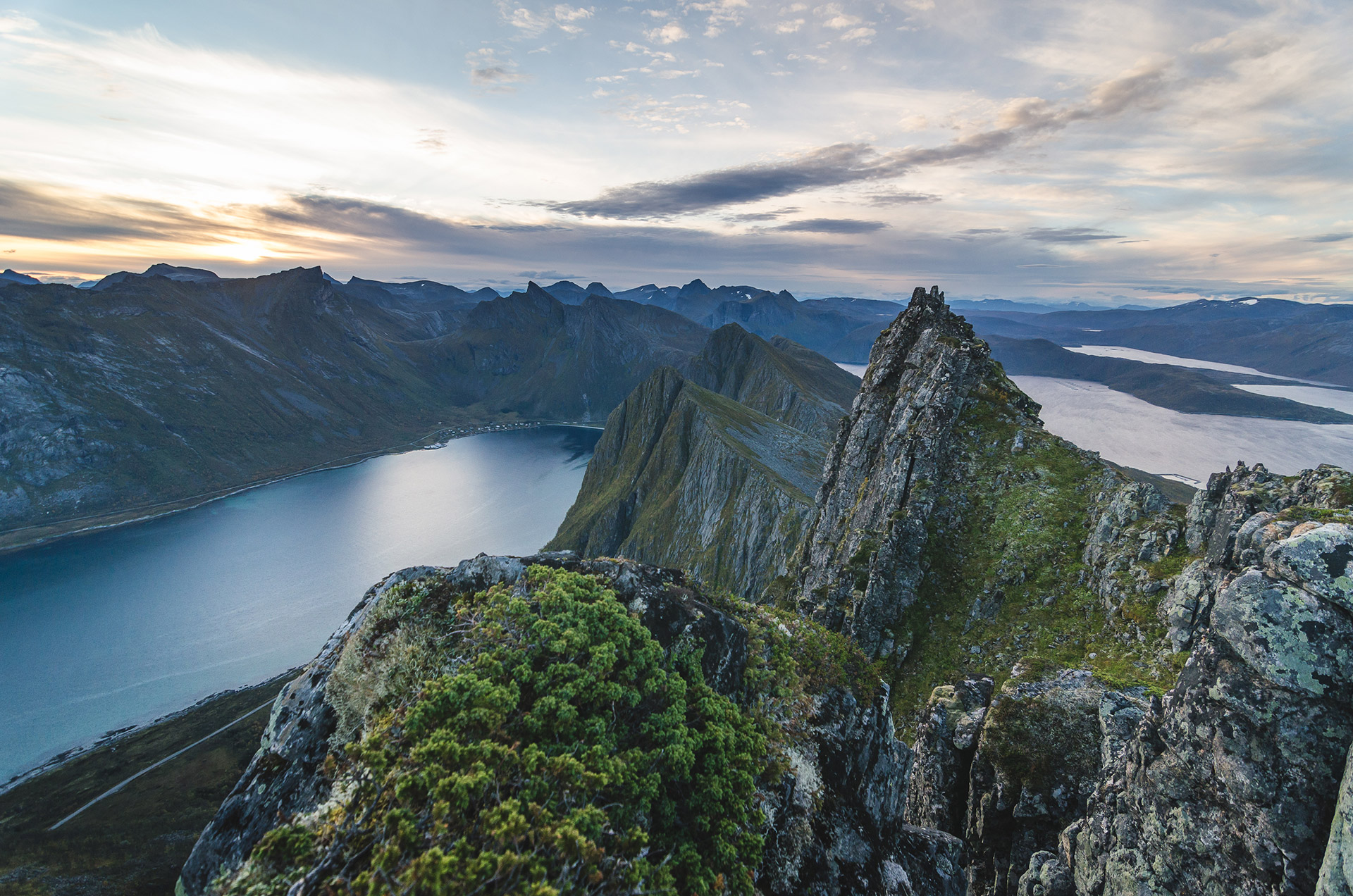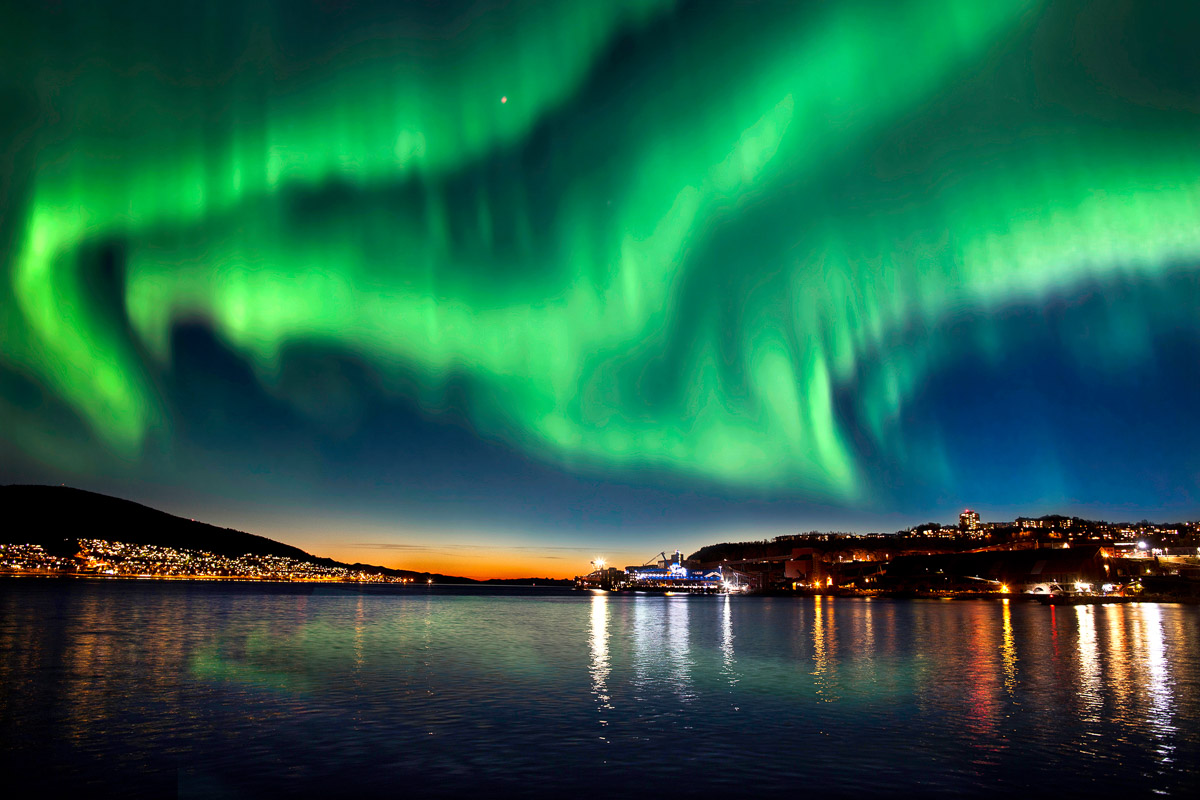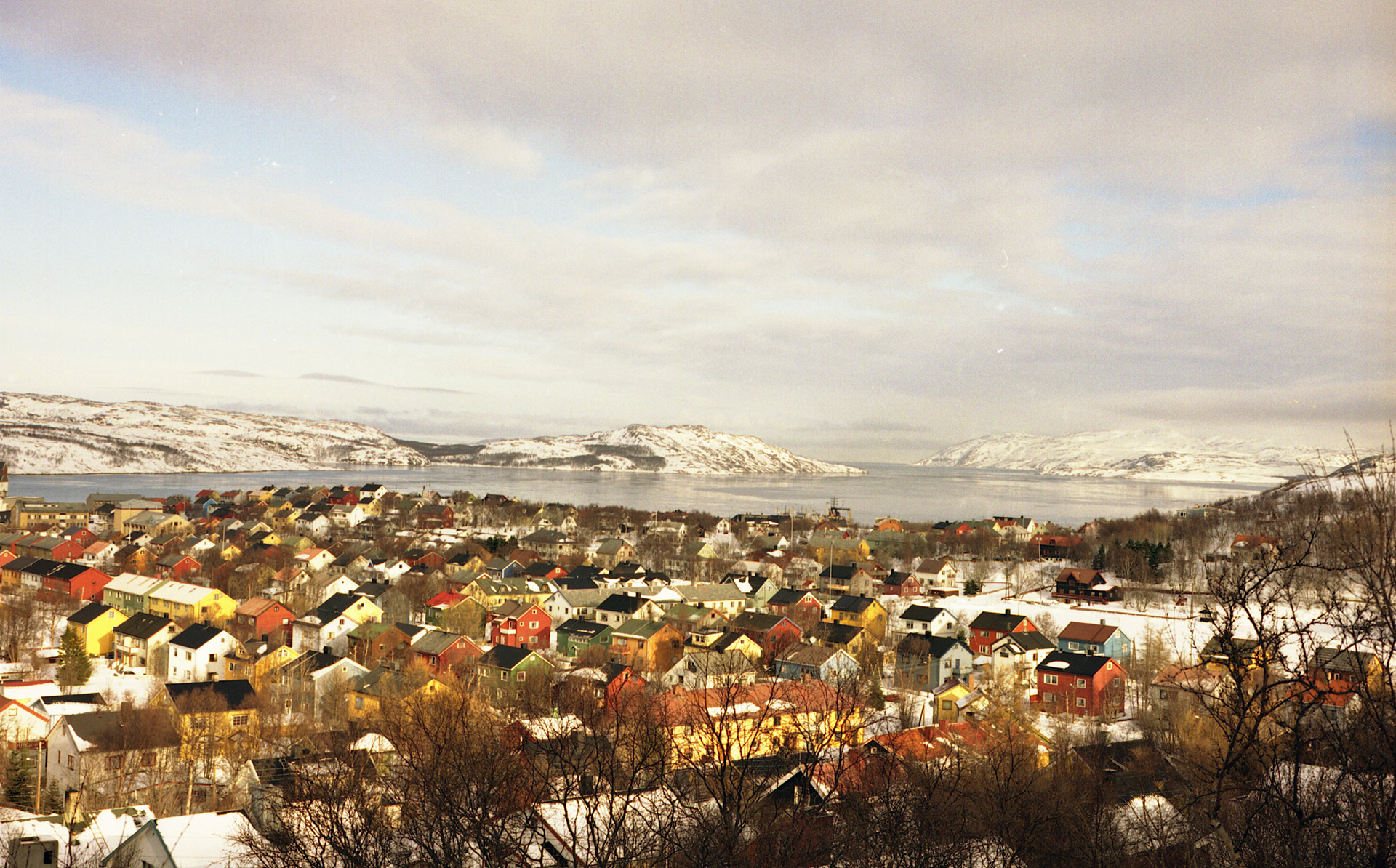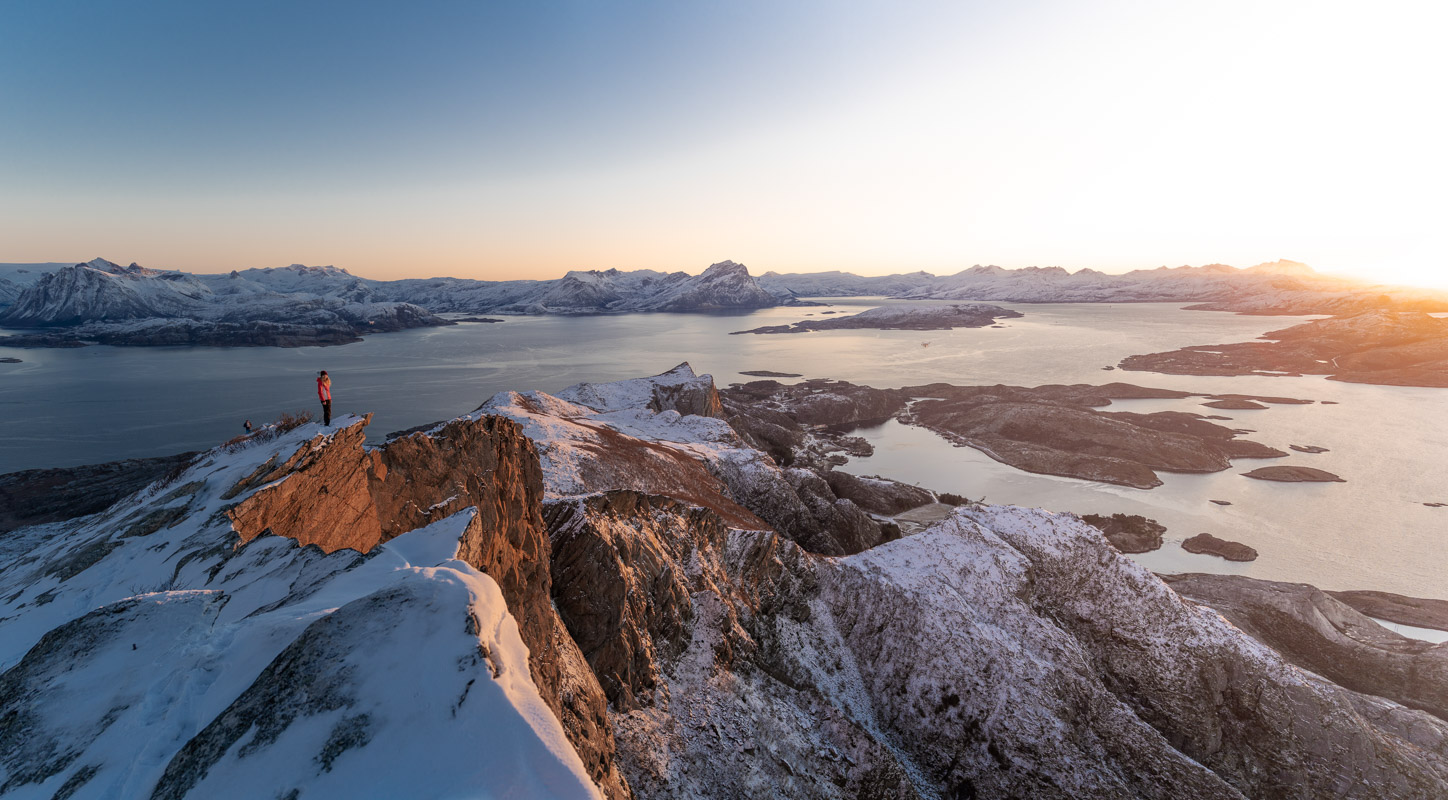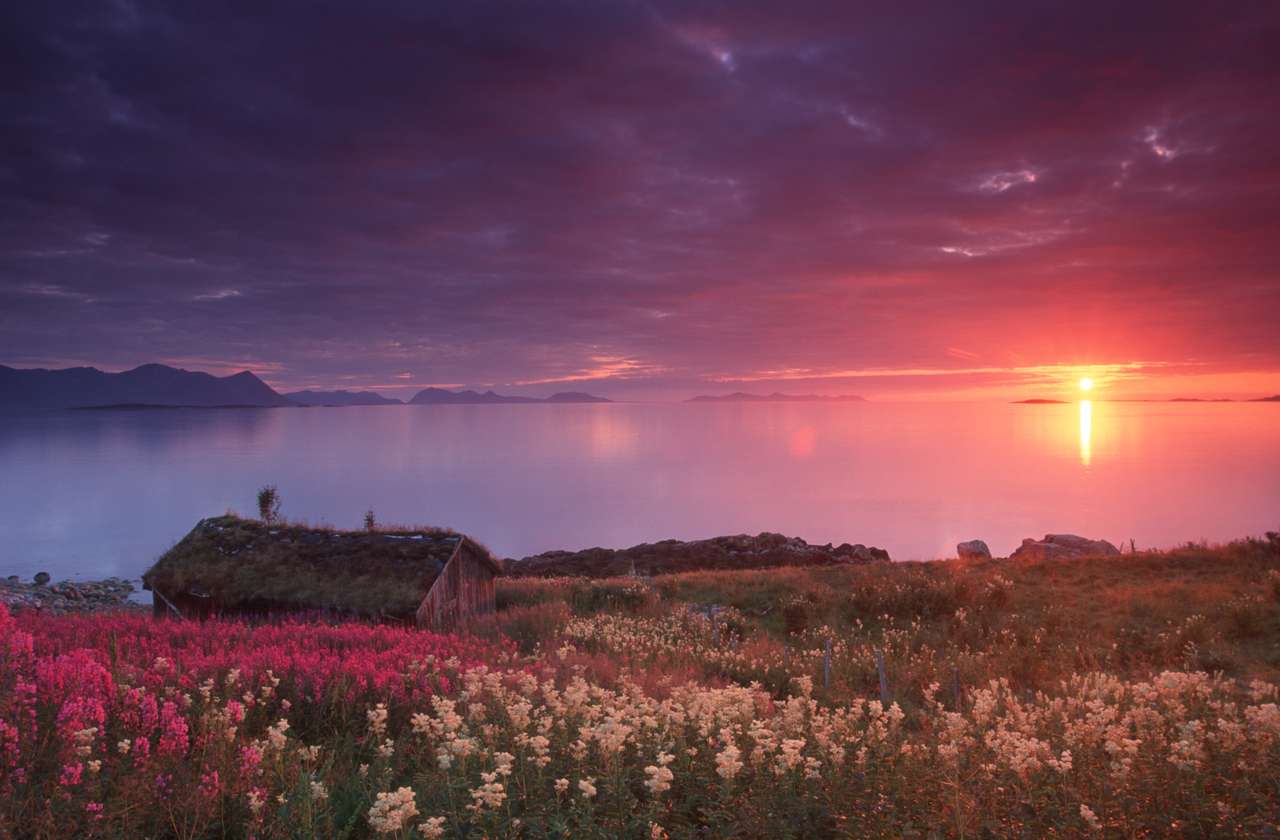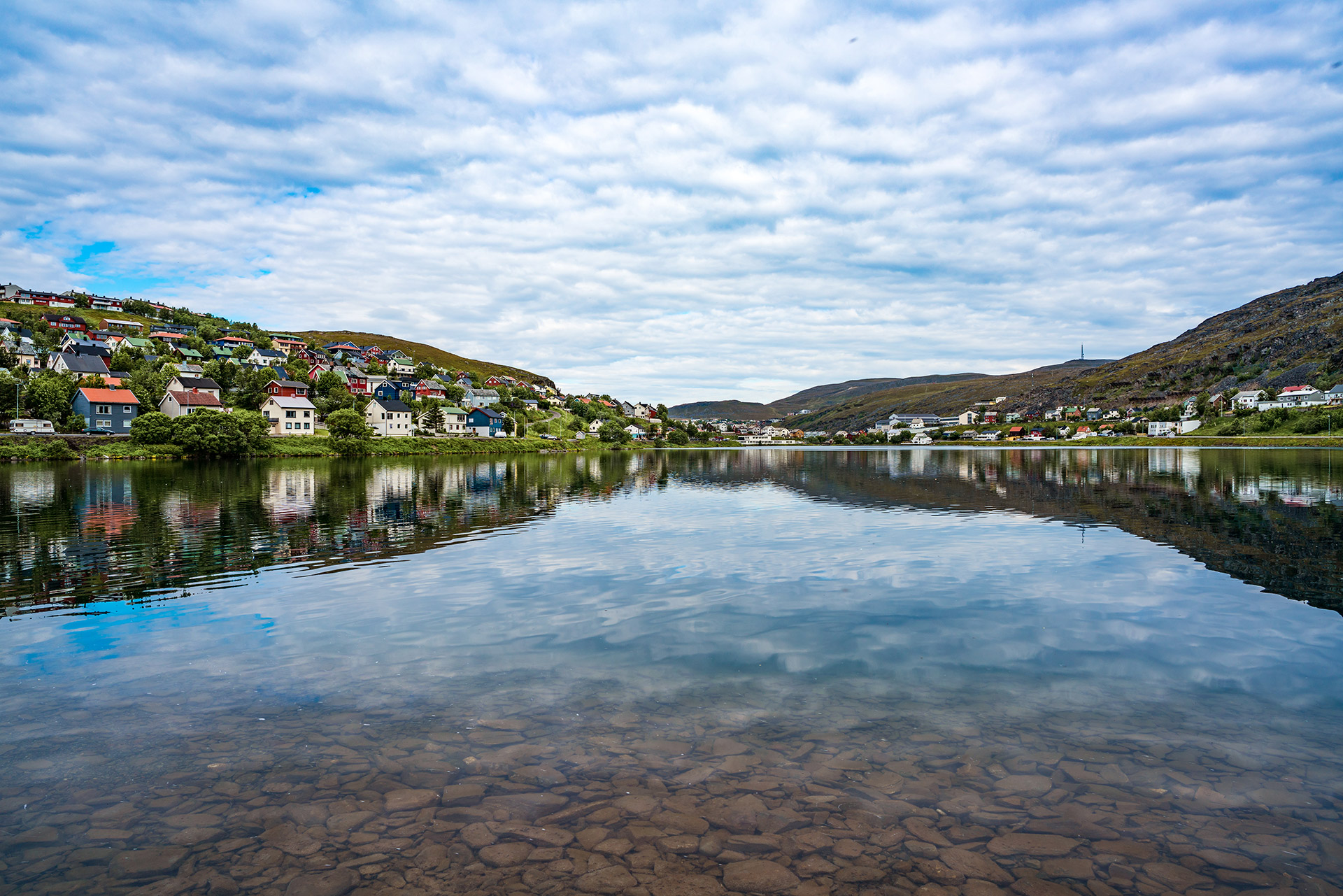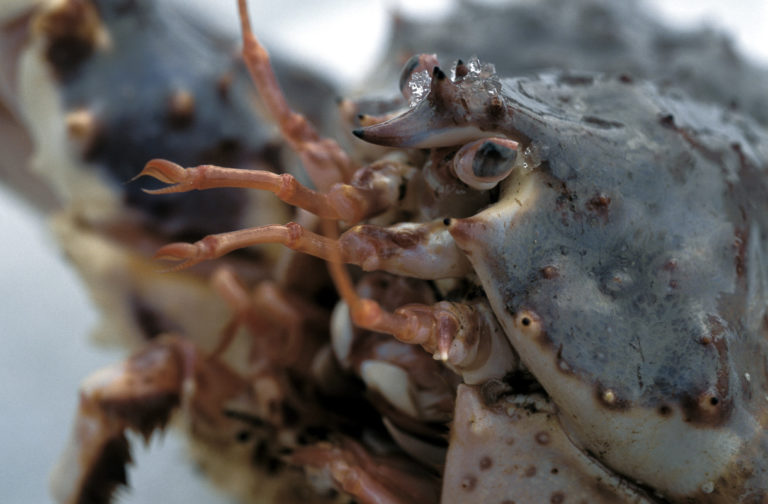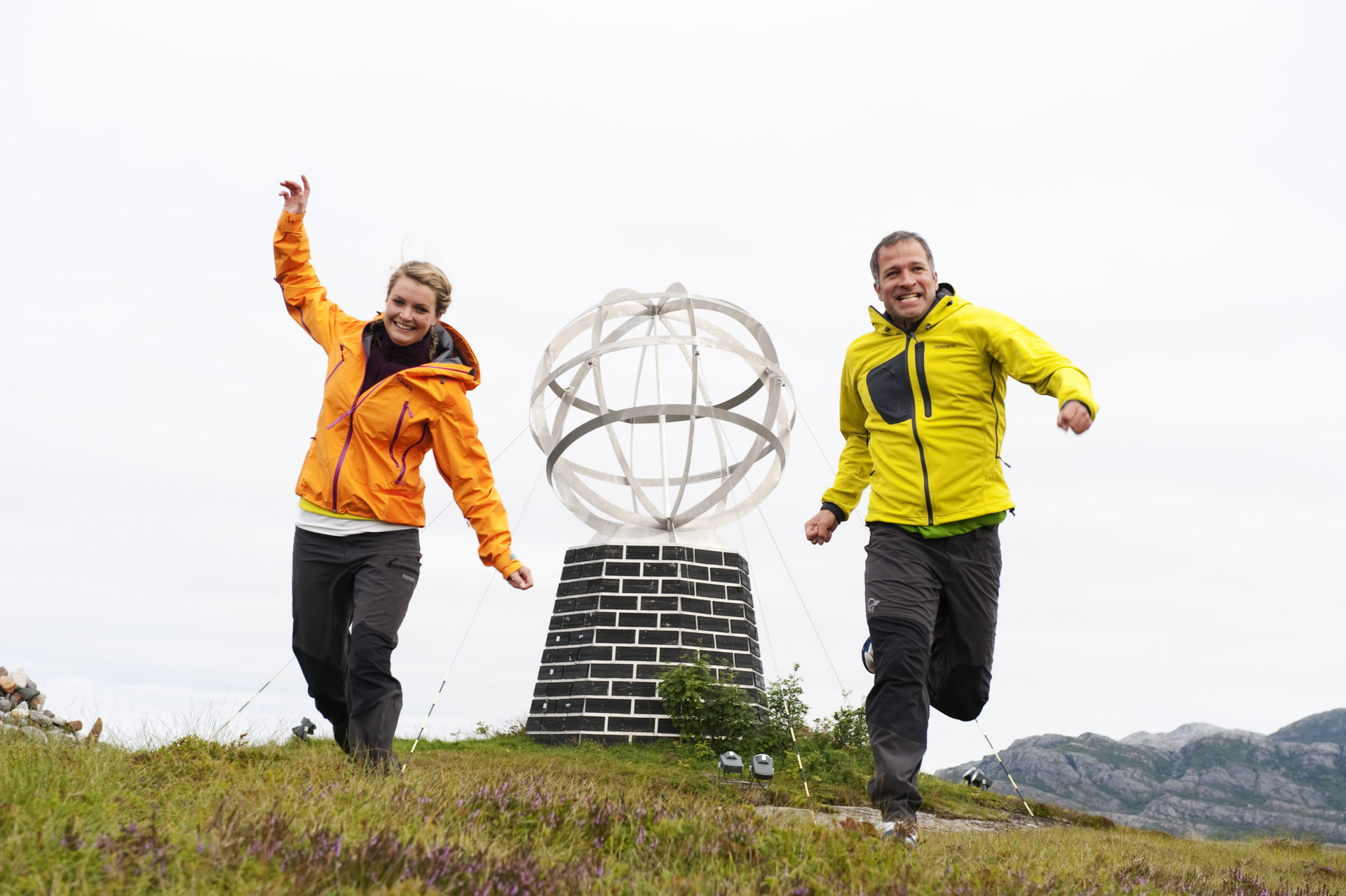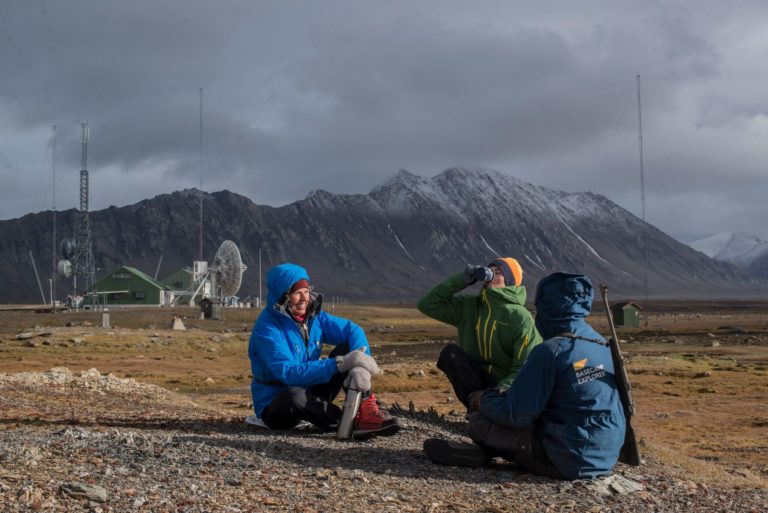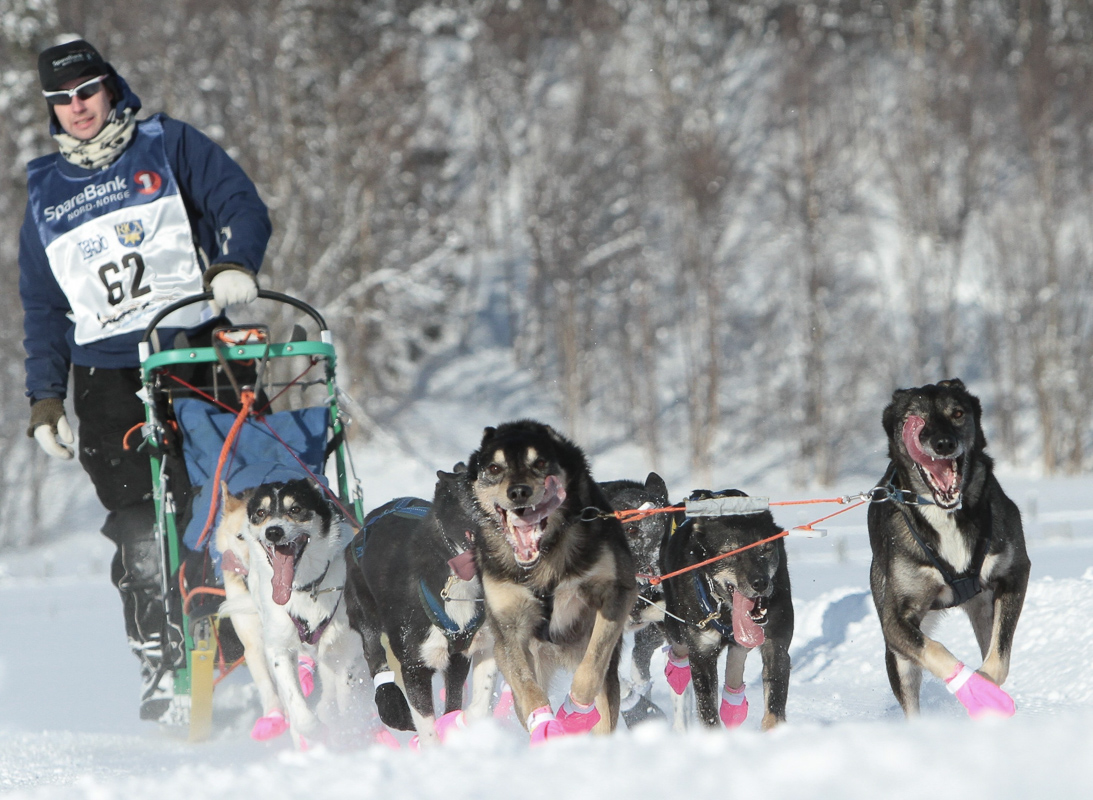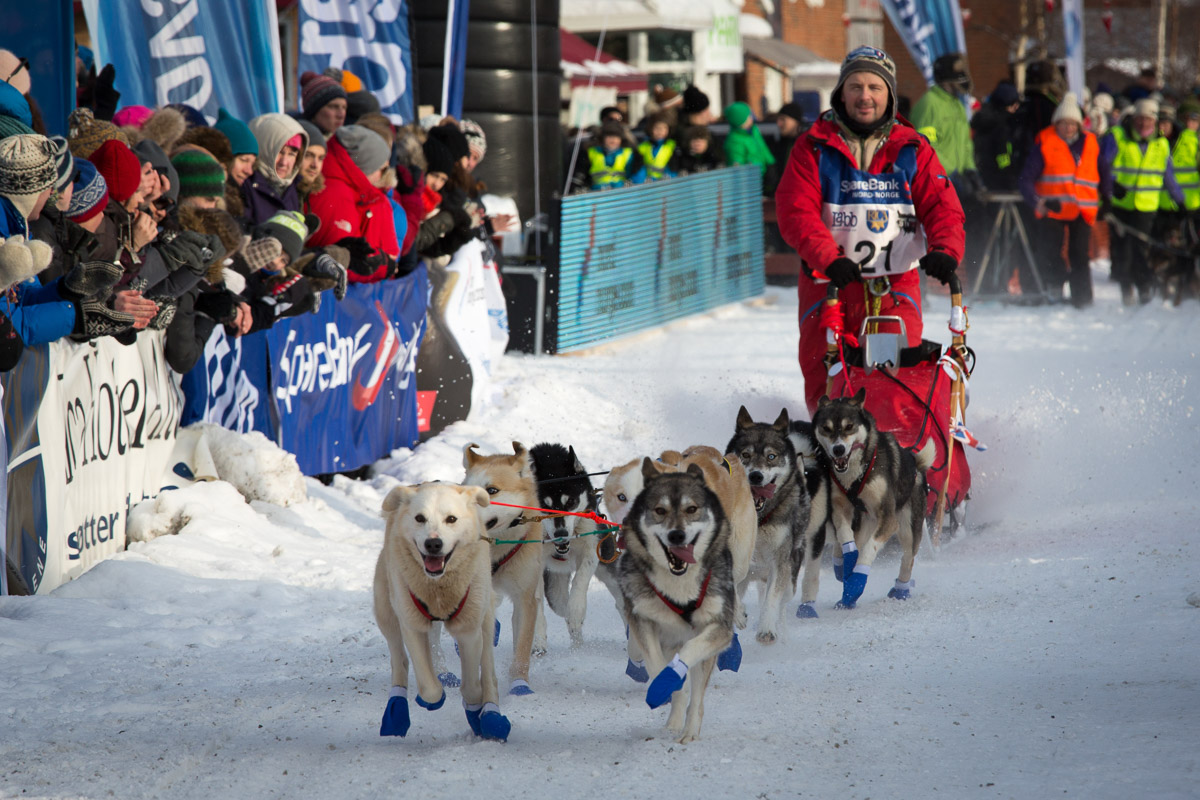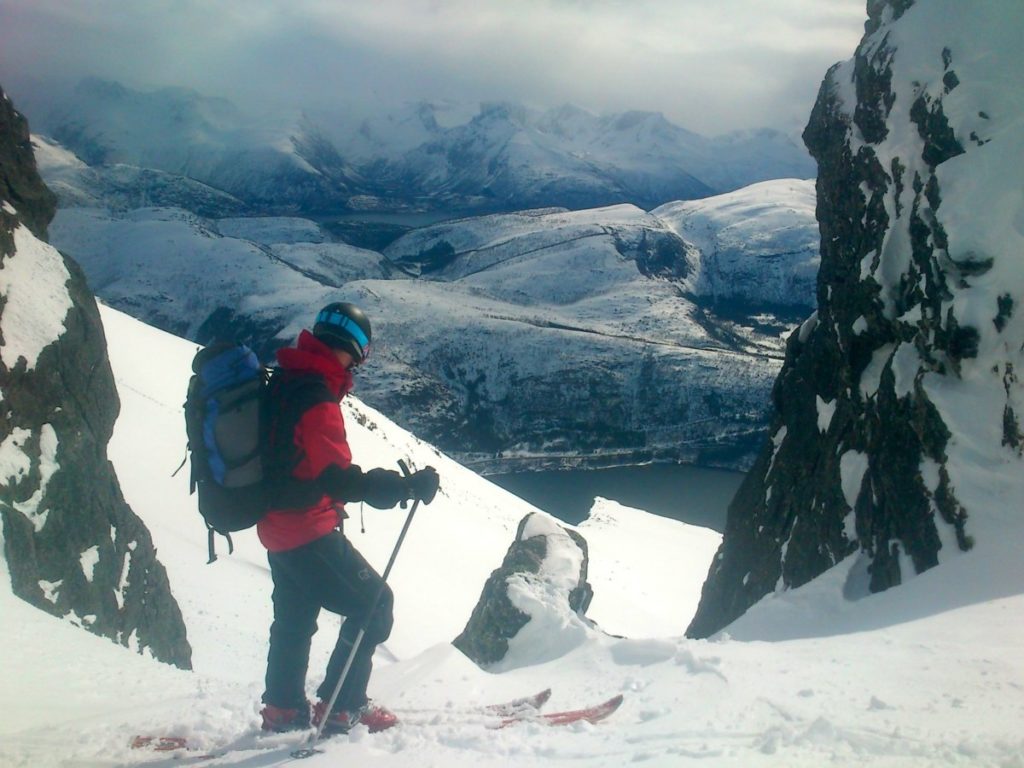Northern Norway extends for more than 1000 km from the south-west to the north east, with the Svalbard Islands even further away. The climate varies from mild and wet to cold and dry, and you find everything from frozen tundra to sky bars serving champagne under the lights. This article aims at telling you which part of Northern Norway is best suited for YOUR ideal Northern Lights holiday.
The Northern Lights are mostly in the North of Norway
The Northern Lights oval goes from Lofoten along the outer coast over Senja, Tromsø, Alta, and Hammerfest to the North Cape. This is the area in the world with the highest density of Northern Lights in the world. The lights mostly occur at an altitude of around 100 km/60 mi, meaning that they are visible over most of Northern Norway when they occur. In Southern Norway, Northern Lights are frequently spotted, but not frequently enough to go there for a Northern Lights holiday. Chances are simply too big to miss them. Northern Norway is also among the mildest regions in the Arctic, with a good infrastructure and a well organised tourist industry. It is thus easy to travel here.
What are the Northern Lights?
Is Norway better than Iceland?
Parts of Alaska, North-western Canada, Greenland, Iceland, and areas in Finland and Sweden close to the Norwegian border are also under or close to the Northern Lights oval. That means that some of these areas have the same amount of activity as Northern Norway and can with equal rights say they have the most Northern Lights on the planet. These areas have different landscapes, climate, and cultures, and offer different attractions and activities. We therefore thoroughly recommend these locations for a winter holiday as well.
How do you design your own Northern Lights experience?
An autumn and winter holiday in Northern Norway with the aim of seeing the Northern Lights can be shaped in many ways. Some people are ready to dress up warmly and ski into the wilderness for maximum chances. Others would like to combine the Northern Lights with easy activities such as dog sledding or snowmobiling. For some, an Irish Coffee in a sky bar is the stylish way to see the Northern Lights. We have tried to group the destinations around the major airports; Bodø, Harstad/Narvik, Tromsø, Alta, Kirkenes and Longyearbyen.
Combine the North Cape with Alta and Hammerfest for your winter voyage
The airport in Alta is a gateway to destinations such as Alta, Hammerfest and Nordkapp, the North Cape. Alta has many activities and a perfect climate for Aurora watching, the North Cape is that legendary, albeit stormy, place you should visit, and Hammerfest has sights and a bit of that arctic urban feel.
Alta is the Northern Lights city with the igloo hotel
Alta was the starting point of the modern Northern Lights research in the late 19th c. The scientist Kristian Birkeland had an observatory built on Mount Halde and could both photograph the lights and do the first real obserations. The reason for choosing Alta is still valid today; Alta enjoys a stable and dry climate. This means a lot of clear skies with good chances to spot the lights. Alta has a good number of experienced Northern Lights chasers. Alta is also Norway’s dogsledding metropolis, and some of the best dogsledders in the country are found here. Dogsledding is a fun way to look for the Northern Lights. Skiing, fatbike, snowshoeing and the Sorrisniva Igloo Hotel add to the experience.
The North Cape is the ultimate Northern Lights experience
Nordkapp, the North Cape, the abrupt northern end of the European landmass and legendary landmark, is of course that special place to see the Northern Lights for any true traveller. It only takes half an hour to drive here from the nearby town of Honningsvåg, but the bus follows a snow plow when crossing the Arctic high plateau. If the weather goes all wrong, the tour is simply cancelled. This means you should plan a trip there with a very flexible programme. Including Alta on the same trip increases your chances radically to see the lights.
Hammerfest is the world’s northernmost city
Hammerfest, the oldest city in the north, has no Northern Lights infrastructure. Instead, Northern Lights chasers go on their own around this town, seeing the Northern Lights from Mount Salen with the city below, to the nearby hamlet of Forsøl and simply down to the dockside. Hammerfest is the urban respite in this region and deserves a visit between dry Alta and the North Cape landmark.
Hammerfest is off the tourist trail
Combine Tromsø with fjords and islands nearby
Tromsø’s airport has the most international connections. Tromsø was the first Northern Lights destination in the north, and the city has an impressive selection of tours and activities on offer. However, for a complete winter experience, combine Tromsø with scenic areas nearby. The Lyngenfjord area has deep fjords and towering mountains, and the dramatic Atlantic coast of the Island of Senja is stunning. Tromsø is also easily combined with Svalbard.
Tromsø is the Northern Lights metropolis
No destination anywhere in the high north can match the wide array of Northern Lights chasers, dog sledding, snowshoeing, skiing, boat trips and various other organised tours to see the Northern Lights. Since Tromsø was the first location to receive Northern Lights guests, the knowledge among the seasoned guides is impressive. The city has entertaining weather patterns, and starry nights above the city are by no means guaranteed. The skillful guides, however, go to rain shadow pockets inland or out to the outer coast and mostly succeed in finding those necessary clear skies. Add the city’s picturesque city centre, good restaurants, lively cafes, and numerous attractions for that complete Arctic urban experience.
Lyngenfjord has clear skies and dramatic scenery
Some of Norway’s driest locations are found in the Lyngenfjord area. Behind the towering Lyngen Alps, the rainshadow effect creates a dry climate with lots of clear skies. This means you stand very good chances of watching the lights. The area is frequently visited from nearby Tromsø, but it is so much better to hire a cabin and stay there a couple of days, maybe with friends or your significant other. At daytime, the stunning landscape of fjords and jagged peaks keeps us in a state of constant amazement. There is good dogsledding and snowmobiling available, and at the end of the Northern Lights season, people come here to ski the steep slopes of the Lyngen Alps. Around mid winter, Lyngenfjord has the last few years been visited by orcas and humpback whales, chasing herring.
The Island of Senja is a micro continent of winter landscapes
The island of Senja is schizophrenic; the inland valleys are snow-clad forested winter wonderland, excellent for skiing, dog sledding and snowmobiling. The outer coast, however, is wild, dramatic, and storm-beaten, with fishing villages huddling around the small coves. For the Northern Lights, one criss-crosses the island to find the clearest skies, be it on the outermost coast when the wind comes from the east, or in an inland pine forest when the north western lows rage. Senja is firmly off the beaten track in winter, but there is good accommodation and small, professional tour organisers.
Svalbard is the world’s northernmost destination
The islands of Svalbard, with Spitsbergen as the biggest island, is the world’s northernmost tourist destinations. The airport at Svalbard is a mere 1100 km from the North Pole. Yet, you can easily fly there, take the airport bus to town, check into a normal hotel and go for dinner, be it a pizza or a posh restaurant. You can even finish off with a drink in a rowdy bar. The normality of it is surprising, given that you are in an outpost of 2000 people.
Daytime Northern Lights are a Svalbard speciality
For two months around mid-winter, there is no daylight in Svalbard. Then the Svalbard sky offers a speciality; the daytime Northern Lights, coming more directly from the surface of the sun. For the seasoned Northern Lights aficionado, this is not to be missed. Of course, the regular Northern Lights, having made the detour to the night side of the planet, are also visible. You just must look south, as Svalbard is on the other side of the oval. The tours on offer in Svalbard are of high quality, be it dogsledding, snowmobiling, Northern Lights chases and exploration of ice grottos under the glaciers.
Go east for a different Northern Norway
The airport in Kirkenes has direct connections with Oslo, and is the gateway to a different Northern Norway, the far north east. The landscape is not the ordinary fjord and mountain type. Instead the rolling hills, deep forests, meandering rivers and desolate coastlines have a different beauty, especially when bathed in frost and deep blue winter light. The independent traveller will find Northern Lights, landscapes, and people out of the ordinary.
Kirkenes is the border town with the Snow Hotel
Kirkenes is that town on the Russian border where both the Hurtigruten shipping line and the western road system ends. The Kirkenes Snow Hotel gives you the best sleep you’ve ever had (true story!), and you can forage deep into the pine forests by snowmobile or dogsled in a landscape that is part of the endless taiga, conifer belt, stretching all the way to the Bering strait and beyond. The king crabs are scary monsters you can fishing on a frozen fjord, they are delicious with bread and white wine.
Varanger is well off the beaten track
Very few human tourists come in winter to the north-eastern extremity of Norway, to the Varanger Peninsula. However, to the colourful arctic ducks, this is a true costa, and tens of thousands of them can be seen swimming around the settlements. The historic mini-city of Vardø, the multi-ethnic city of Vadsø and the small settlements along the Varanger Fjord are sometimes exposed to violent storms, sometimes bathed in the pink and deep blue of frosty winter.
Two fishing villages are as far away as you can get from tourism
The two fishing communities of Berlevåg and Båtsfjord are one mountain pass away, and between them the Arctic Coast Highway is a dramatic coastline of cliffsides and quiet coves. When the low light of the winter days colours the cliffsides, it turns into a photographer’s delight. Varanger has precious little in terms of organised tours. Instead, visitors are included in the everyday of small communities.
Nordkyn is Europe’s northernmost mainland
The peninsula of Nordkyn, with two major fishing villages and some hamlets, is the northernmost mainland of Europe. This large expanse of snowy landscapes is perfect for snowmobiling, and the tour between the two main villages, Kjøllefjord and Mehamn, is easy to join. Sami culture is also well at home here, and you can visit a Sami tent, dine, and get to know this unique culture. Slettnes Lighthouse is the world’s northermost mainland lighthouse, and is of course a special Northern Lights observation point.
Finnmarksvidda is the homeland of the Sami
The land of the Sami, the high mountain plateau of Finnmarksvidda, is an endless wilderness of rolling hills and wide horizons. Two larger communities, Karasjok and Kautokeino, are found here, and apart from a few hamlets, the rest is wilderness. This area has a dry, cold continental climate, with lots of clear skies and Northern Lights. One goes here to meet the Sami culture, as reindeer herding is one of the mainstays of the local economy. Sami culture is also the main point of interest for the visitors, notably reindeer sledding and enjoying meals in lavvu’s, Sami tents. There are also wilderness expeditions organised and sleeping in a tent far away from any city lights of course gives you the best chances of spotting the lights.
Harstad/Narvik Evenes is in the heart of Northern Norway
The airport of Harstad/Narvik has frequent connections with Oslo and the south. From here, it’s half an hour’s drive east to Narvik and less than an hour west to Harstad. The archipelago of Vesterålen is a couple of hours’ drive further west, and also the legendary Lofoten islands can be reached from here. For a week’s winter holiday, it’s easy to combine two or three of these destinations. A varied programme of Northern Lights chasing, winter activities and sightseeing, along with good food is easy to put together.
Harstad is the gourmet winter city
Picturesque, welcoming and snowy Harstad sees surprisingly few tourists. Found directly under the Northern Lights, it is an excellent base for exploring an area of fjords, mountains, islands and Viking history. There are Northern Lights tours, along with dog sledding, skiing and RiB tours. Harstad has good museums, the world’s northernmost mediaeval church and the giant Adolf gun from WWII. The food scene is surprising, with several excellent restaurants.
Vesterålen are the islands in the Gulf Stream
The Vesterålen Islands are found in the middle of the Gulf Stream and enjoy a mild climate. This means you don’t have to freeze so much. The islands have a wonderful landscape of mountains surrounded by a myriad of islands. A good idea is to stay in a cabin in a fishing village, explore the wonderful landscape and picturesque fishing communities at daytime, and consecrate the evening to the Northern Lights. If you’re mobile, you can move from inner fjords to the outermost coast to maximise your chances of clear skies.
There is plenty to do in the day in Vesterålen
Vesterålen has Sami culture, dog sledding, fishing, RiB tours, kayaking and even good randonné skiing. Off Andøya, you can go whale watching even in mid winter. The abandoned fishing village of Nyksund, the Norwegian Scenic Route Andøya, Airship Aurora, the blue city of Sortland and the Hurtigruten museum in Stokmarknes are among the chief attractions.
Narvik chases the Northern Lights across every border
Narvik is found on one of Norway’s most dramatic fjords, the Ofotfjord. The rugged landscape of mountains and fjords ensures great meteorological variation. If it’s cloudy in town, it may be clear skies and dancing Northern Lights on the Swedish border or in the dry Skjomen area. Narvik itself is known for Hitler’s first defeat in the battle of Narvik in spring of 1940, and a visit to the war museum is a must. The 1000 metre high ski resort allows you to ski all the way down to the fjord. At Polar Zoo north of town you can do French kissing with wolves, and there is plenty of Northern Lights chasing, dog sledding
Go abroad by train from Narvik
The Ofoten Railway is a part of the Swedish network extending into Norway and Narvik. You could choose to do a scenic rail tour of less than an hour to the border ski resort of Riksgränsen (the ä reveals it, it’s a few hundred metres inside Sweden) to see the lovely Rombaksfjord. However, many tourists like to include a visit to the resorts of Abisko and Björkliden as well as the mining town of Kiruna and the adjacent ice hotel in Jukkasjärvi. Oversees travellers planning to see several countries on a longer voyage should definitely do the epic border crossing between Kiruna and Narvik.
In Lofoten the Northern Lights dance over jagged mountains
The legendary islands of Lofoten rise dramatically from the Golf Stream, and in winter, they are snow-covered. The southern coast is littered with picturesque fishing villages, living off the Norwegian Arctic cod spawning off the coast from midwinter to April. This means that winter is the liveliest time in the communities. The photographers are always on the lookout for Northern Lights photos with the jagged peaks, the fish racks and the traditional houses in the foreground.
Go to the north side of Lofoten when the weather is iffy
Snow from the north west or rain along the Golf Stream, the weather isn’t always co-operative in Lofoten. However, if the snow showers gather around the peaks, there might be pockets of clear skies in the eastern fjords. The north coast often sees clearing up in difficult nights.
Fly to Bodø for the mild Northern Lights experience
Lofoten is just as easily access from Bodø Airport, you just cross the sea of Vestfjorden by boat instead. The airport of Bodø has frequent connections to Oslo and onward connections by plane, boat, train and bus to beautiful areas of the north. Bodø itself has plenty to offer, and there are some grand attractions nearby.
Bodø is the mildest destination under the Northern Lights
The ultimate Bodø way of seeing the Northern Lights is from a sky bar in the centre. Have your jackets on the ready, and jump out when Aurora decided to turn up, and see her dance above the city and the ocean. The beauty of Aurora watching in Bodø is the mild climate; you don’t have to freeze so much while waiting for the show to start.
There is plenty to see in and around Bodø
Bodø has several interesting museums, some landmark modernist architecture from the reconstruction era after WWII bombing and a lively restaurant and nightlife scene. Not that many tourists come here, so this is really where you meet young and modern Northern Norway. The historic trading post of Kjerringøy and the world’s strongest tidal current, Saltstraumen make lovely excursions out of Bodø.
Go inland from Bodø to increase your Northern Lights chances
To maximise your chances to see the Northern Lights in this area, you should head to dry inland areas. Locations such as Rognan, Storjord and Junkerdal are hidden behind massive mountains and are desert-dry when it rains or snows in Bodø. The old mining towns of Sulitjelma and Jakobsbakken are found amid towering mountains in a wilderness, and are excellent observation points. Places like Kobbelv in the heads of the fjords are also good places. Jakobsbakken and Kobbelv are small resorts organising tours.
Helgeland is the mildest Northern Lights area
The southernmost area of Northern Norway is also the mildest and less snowy, at least along the fabulously beautiful coastline of 20 000 islands. Further inland, snow lies deep. Being a bit distant from the Northern Lights zone, the activities are somewhat more reduced here. Travellers seeking calm and solitude can hire holiday homes in villages in the scenic coastal areas, explore by daytime and observe at nighttime. The inland of Helgeland sees a lot of snow, there is a lot of good skiing and dogsledding, and at night you can spot the Northern Lights.
See the Northern Lights on Hurtigruten
The shipping line Hurtigruten has been sailing from Bergen to Kirkenes since 1893. This is an epic journey of magnificent scenery, storm and calm waters, local life and international tourism. In winter, one can sit in the lounges on the top deck and look for the lights, warm clothes and camera on the ready. The minute those green rays appear, you run out. Hurtigruten can be the main object of your holiday, or you can travel from Bodø to the Lofoten Islands, Tromsø to the North Cape or any other suitable distance along Northern Norway’s coast.
Which place is for you?
Some people are willing to dress up in several layers and go skiing way into the wilderness all alone to see the lights. Others like a good mix of fun activities in the snow. Maybe the Northern Lights are the only reason to go. Good food and a drink with the locals are as important as the Northern Lights to some. Which of the following personalities are you?
A: Maximising your chances: You want to maximise your chances of seeing the Northern Lights, and consequently want to seek out the places with the driest climate.
- Alta
- Inner part of the Lyngenfjord area, adjacent areas further south
- Pockets south of Narvik, such as Skjomen
- Saltdal and Sulitjelma near Bodø
B: The photograph to end all photographs: You want the epic photograph of the Northern Lights.
- The North Cape
- The Lofoten Islands
- Narvik‘s city mountain
- Slettnes lighthouse
C: Being active in the snow. You want lots of winter activities, extending into the night, so that you have fun whether the Northern Lights turn up or not.
D: Relaxed Northern Lights watching: You want to combine the Northern Lights with good food, a bit of nightlife and that urban feel:
E: Seeking out a different Northern Lights experience: You want to experience the Northern Lights in remote areas with few other tourists:
F: The other Northern Lights: You want to see the rare daytime Northern Lights:
G: The big escape: You want to hire a hut, relax for a few days and go for walks, do sightseeing on your own and see the lights from the doorstep of that hut. Organised activities are too much of a hassle.
- Helgeland
- Salten
- Lofoten
- Vesterålen
- Senja
- Lyngenfjord
- All of Finnmark
H: The mild Northern Lights: You are afraid to freeze too much, and want to go somewhere with a less severe winter climate:
